Art Hum Final Exam 2025 Hans
1/54
There's no tags or description
Looks like no tags are added yet.
Name | Mastery | Learn | Test | Matching | Spaced |
|---|
No study sessions yet.
55 Terms
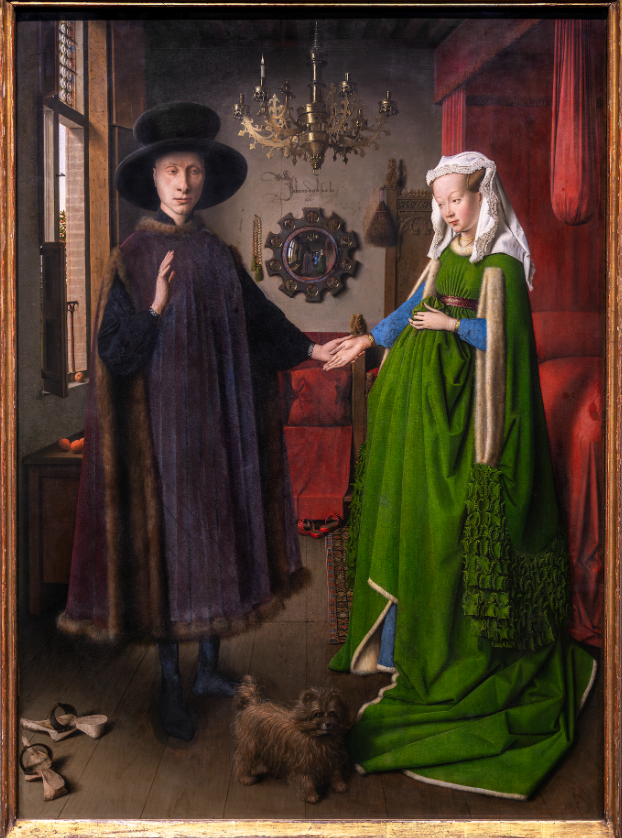
Artist: Jan van Eyck
Title: The Arnolfini Portrait
Year: 1434
Medium: oil on oak, London, National Gallery.
Marriage on : she is less involved, man is more in charge
north= crisp reality, saturated color, oil allows for changes in Italy but tempera paint in north
-strong vertical in center, diagonal of arms clasping hand=center/focal point→ color green and red complementary colors to bring out contrast
- drawn to female side of painting - no more perspectival space here→ empirical system with use of mirror to convey depth, make you focus - celebrate woman as demure and ornate=wealth
- shoes are off, one candle=God, dog=fidelity, bed and duster on woman side - symbol of both legal and sacred marriage - shows witnesses in mirror (need 2 to be married)
- Christ/story of Christ in circles around mirror - oranges=luxury good only from outside world- man as near window/outside world
- merchant class
- symbolism differs from Amiens - overload symbolism but in a secular way
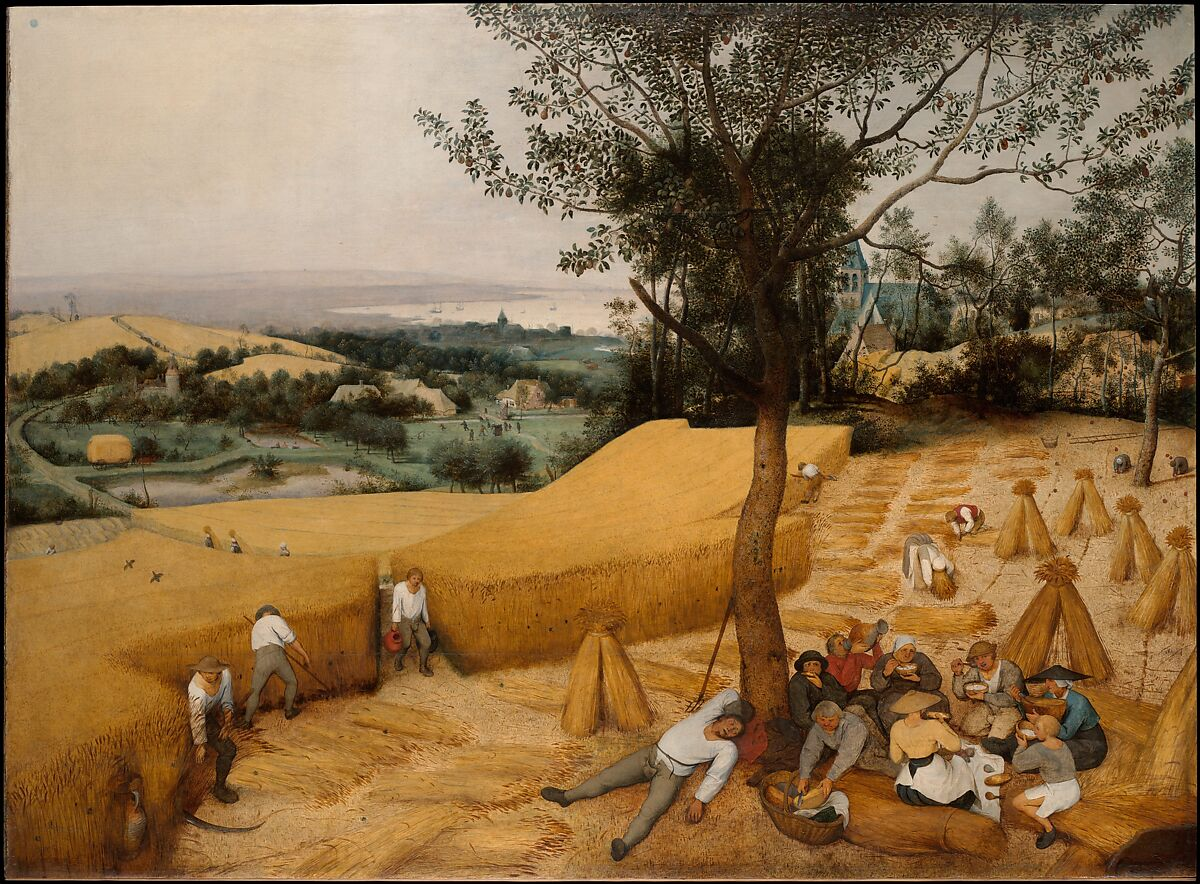
Artist: Pieter Bruegel
Title: The Harvesters
Year: 1565
Medium: oil on canvas, Metropolitan Museum
-speaks to arcadia and otium (non-working leisure pleasures etc)
- focus is on man
- nature still bigger than man but man can tame
- church in trees
- rich lord (right?) in background-- skipping over him because he’s not a commoner
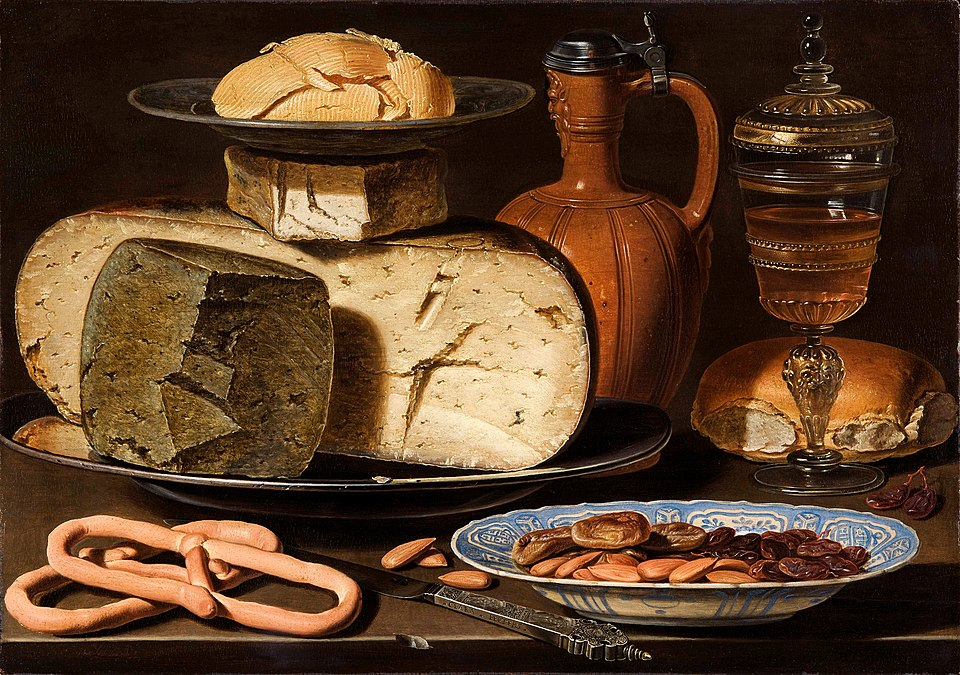
Artist: Clara Peeters
Title: Still Life with Cheeses, Almonds and Pretzels
Year: c. 1615, Mauritshuis, The Hague
Medium: Oil on panel, 34.5 x 49.5 cm
-Women painter → no access to human models to paint (must stay in the house)
-So she paints still life of food
-She signs her name in the knife → she wants to be known as a painter
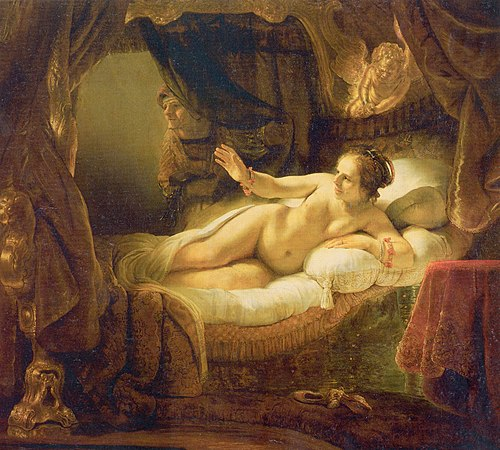
Artist: Rembrandt
Title: Danae
Year: 1636
Medium: oil on canvas, The Hermitage Museum, St. Petersburg.
-locked in tower→ Greece
- zeus comes to tower → has son → son throws discuss and cuts grandfather’s head off on accident
- relationship between exposure and desire- she is active with hand- reaching outmore engaged than traditional nude
-her nude body is ideal beauty → pale white skin young beauty
-her young beauty contrasts with the old woman in background, who is ugly, thus highlights young woman’s beauty
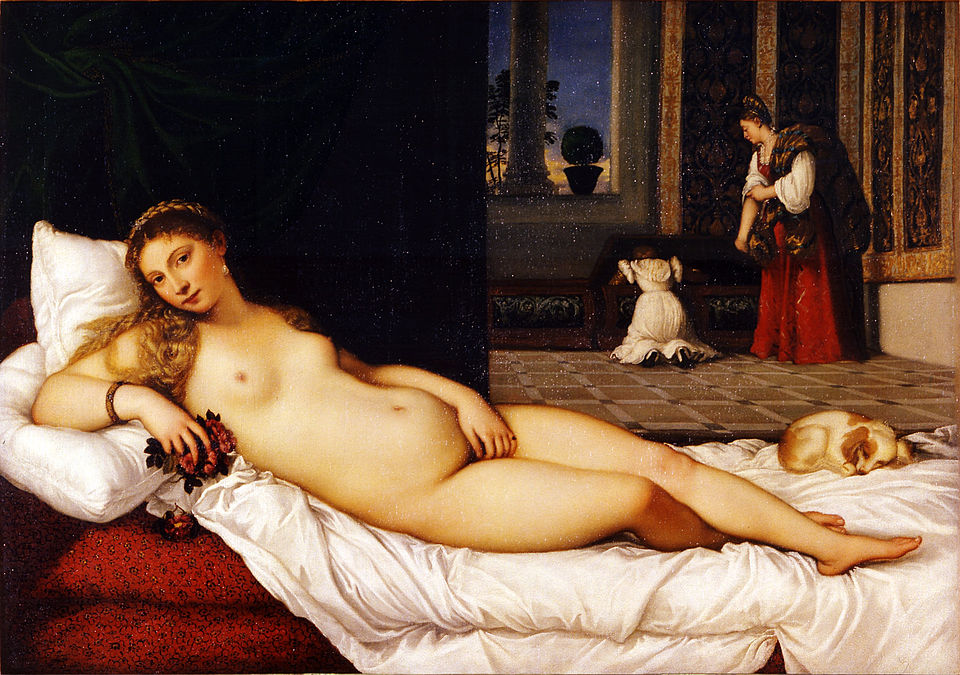
Artist: Titian
Title: Venus of Urbino
Year: 1538
Medium: oil on canvas, Uffizi Galleries, Florence.
-This is a nude! —> woman is viewed as an object for the male gaze
- to be nude- form of dress according to Berger
- naked for self-viewing
- passivity in posture- come hither look
Berger says:
Naked refers to simply being without clothes — a natural state. It implies a kind of honesty or vulnerability.
Nude, on the other hand, is a cultural construct, especially in art. To be nude is to be seen naked by others and not recognized for oneself. Berger writes:
He argues that the "nude" in art is often a spectacle, created for the male gaze — a woman becomes an object to be looked at, posed for the viewer’s pleasure, rather than a subject with her own agency.
Berger's discussion highlights how traditional European oil painting often portrays women not as autonomous individuals but as objects of desire — nude, rather than simply naked.

Artist: Rembrandt
Title: Bathsheba,
Year: 1654, oil on canvas, Louvre, Paris.
David calls to have her brought- he has her husband killed
- curse of House of David- birth to Solomon wise
- body speaks to passion
- bathing- infidelity contemplation
- contrast of youth and old age
- seduction or innocence; naked or nude?

Artist: Rembrandt
Title: Self-Portrait at the Age of Thirty-Four
Year: 1640, oil on canvas, National
Gallery, London.
people recognize quality really focuses on the face
- confirming his success
- transformation from goofy child, adventurous phase
- trying to become the sprezzatura (appearing to be nonchalent even though in reailty he is really trying) he was meant to be (saw Raphael’s picture of courtier b/c it went for sale in Amsterdam)
-Use of light and shadow (light highlights face and hands)
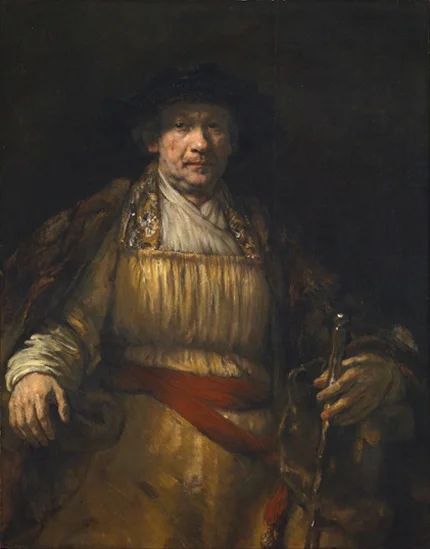
Artist: Rembrandt
Title: Self-Portrait, 1658, oil on canvas, Frick Collection, New York.
-lighting, shadows (light highlihghts face and hands)
-Alberti’s on painting speaks to use of lighting
- alla prima
- older
- painterly
- flakes off when you’re up close
- old and unhappy
- embraces painter persona
- hands
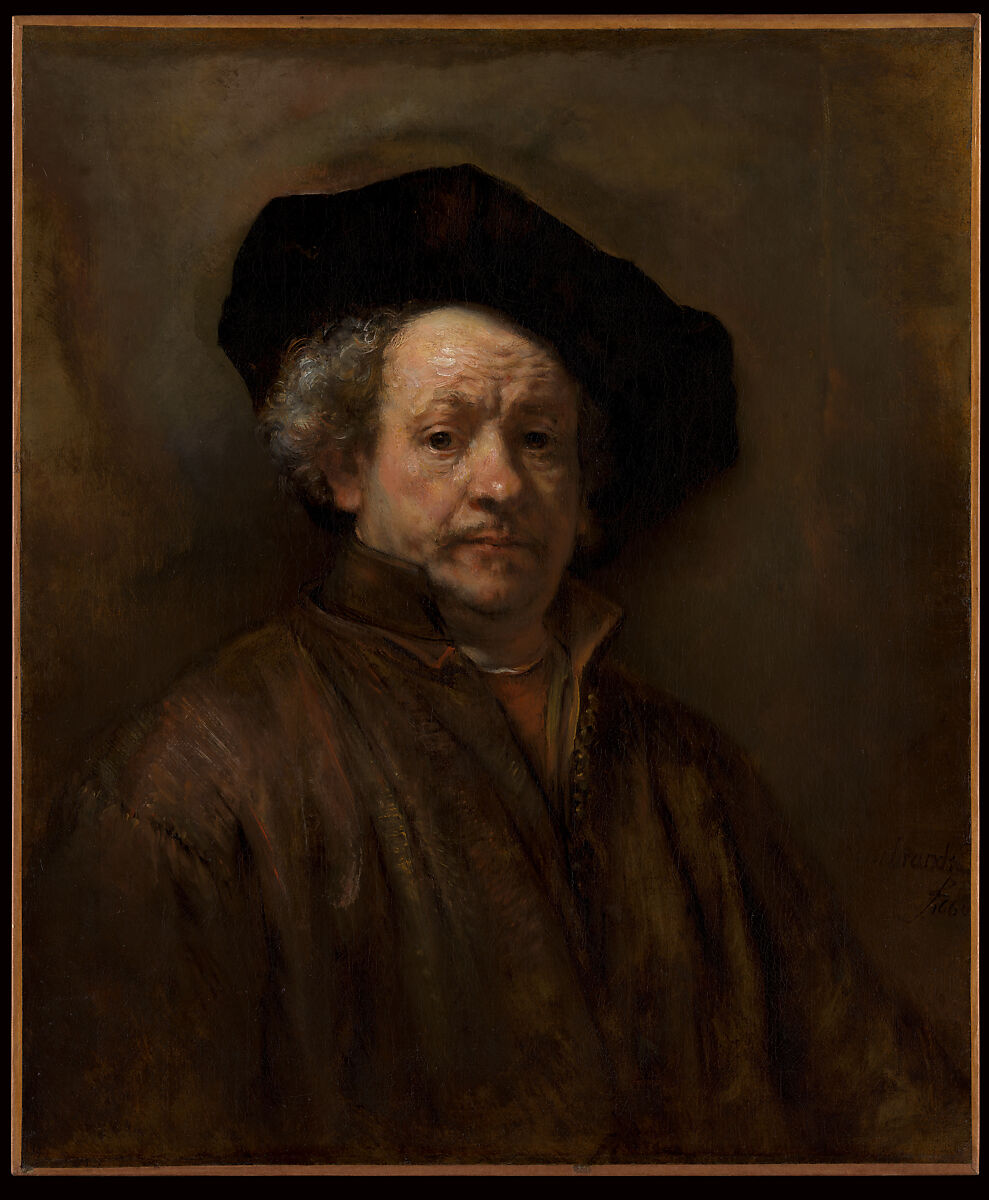
Artist: Rembrandt
Title: Self-Portrait, 1660, oil on canvas, Metropolitan Museum of Art.
-brushstrokes very apparent
-lighting, shadows (light highlihghts face and hands)
-Alberti’s on painting speaks to use of lighting
-closer to end of career, much older, embraces art identity, no longer worried about impressing others, instead shows brushstrokes
character reflects a matured artist, showcasing raw emotion and experience with a focus on technique.

Artist: Rembrandt
Title: Portrait of the Shipbuilder Jan Rijksen and his Wife Griet Jans,
Year: 1633, oil on canvas, Royal Collection, London.
-Here woman is the one near the
double portrait- see interaction b/w the two
-The double portrait (portrait on left) -> provides a sense of interaction/connection between the two figures
Light shines on the hands! (and faces)
Light shines on the notes/paper
Rembrandt uses light to guide your eyes
-Diagonal line from hand to hands to paper on table
Rembrandt likes diagonal line!
Leads you to the paper on the table
Her hand on the door to the outside world
She connects the outside world to him
She interrupts his work, giving him a note
-This looks like this has happened before
-The relationship (Rembrandt gives you this!)
-She owns the ship building company
-He marries her and becomes a part of the business
-As a result she is a lot more involved in the marriage in the day to day
Marriage : she is more involved
- emphasize hands on Rembrandt - arm- arc -
shipbuilding together also brings reputation
- comfortable w/ eo- engage and interrupt him- fairly equal relationship
- lived reality of marriage
- hold right hand out to each other- happens in marriage
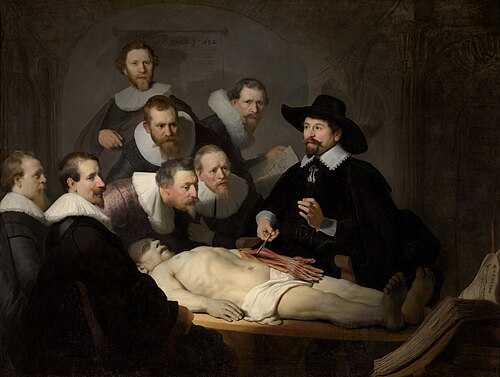
Artist: Rembrandt
Title: The Anatomy Lesson of Dr. Tulp,
1632, oil on canvas, Mauritshuis, The
-lighting, shadow → light highlights dead body and faces facial expression
dead man takes up big space (interesting because he no pay money to be in portrait- not skeleton like traditional anatomy lesson)
- people would have recognized him- thief executed earlier that day - using same muscles to show musculature
- everyone else is shook
- viewer brought in close
- scientific revolution
- life is short
- mortality
-Thieves were executed in the morning then in evening go to the show and dissect the body
-Rembrandt emphasizes the dead body (the body is at the center)
-Which doesn’t make sense because the body is not paying for the work
-But Rembrandt doesn’t want to do something conventional
Main figure is the body
But painting titles is Anatomy Lesson of Tulp
-Doctor Tulp
-Doctor Tulp is teaching -> dexterity -> muscles you lift up in your forearm lets you tap your fingers (like how Dr. Tulp does in his left hand)
The body is the body, no matter what you do on the outside, we all have same body -> we are all going to die -> mortality is in your face
Disturbing to see dead body
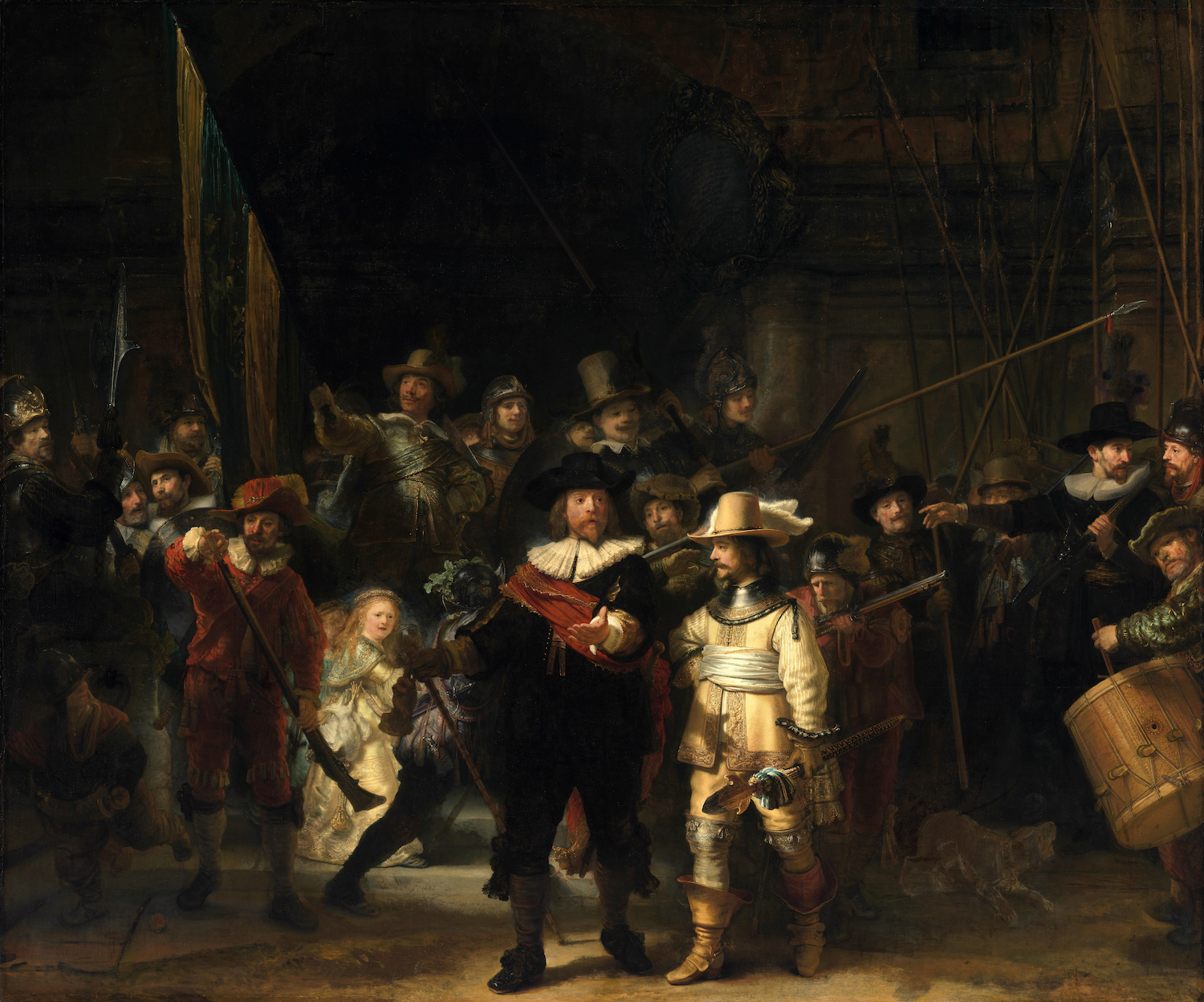
Artist: Rembrandt
Title: The Night Watch
1642, oil on canvas, Rijksmuseum, Amsterdam
The painting of the Netherlands The Dutch
Front plane: 2 center leaders (Captain Kirk and one other person)
Second plane: Militia men
1, 2, 3 planes of militia men but some men cross multiple planes
Captain (one in black and red)
-Captain’s hand is out -> shadow casts to lietuenant’s crotch (lieutenant in white/yellow)
-Captain’s foot steps out more
-Lieutenant’s feet slightly behind the captain’s
-Woman in middle left -> highlighted by light
-Mascot -> is the woman -> holds a chicken claw -> represents the cloveners (that is what the dutch are called, the cloveners)
-Men march out to battle, stepping forward, to outside the walls of the city to defend Amsterdam and battle the Spanish
although 16 people, more shows collectiveness a group
Shows common men coming together to defeat Spanish
-Rembrandt photobombs painting middle top
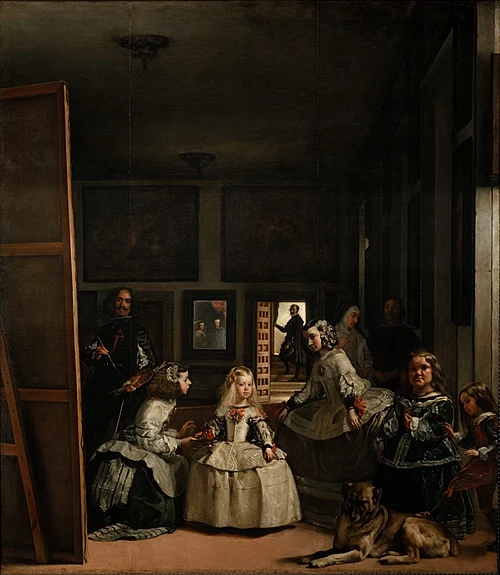
Artist: Diego Velazquez,
Title: Las Meninas, 1656, oil on canvas, Madrid, Museo del Prado.
light sources in painting- window, door in back, mirror, top left
- paint Phillip IV high up, paint in palaces - enfanta Margherita
- Las Meninas are her attendants waiting around her - parents in mirror- that’s what he is painting or maybe it is us!
- guy in door- leads eyes in towards mirror
- curtain functions like in Raph- Sistine Madonna; Van Eyckmirror
- nun and priest- in any image of court life
- dwarves meant to entertain the court- playing with giant dog - vanishing point=door- suggests vanishing point=mirror
- groups in 2s and 3s- compare them=dynamism
- confused traditional sense of space
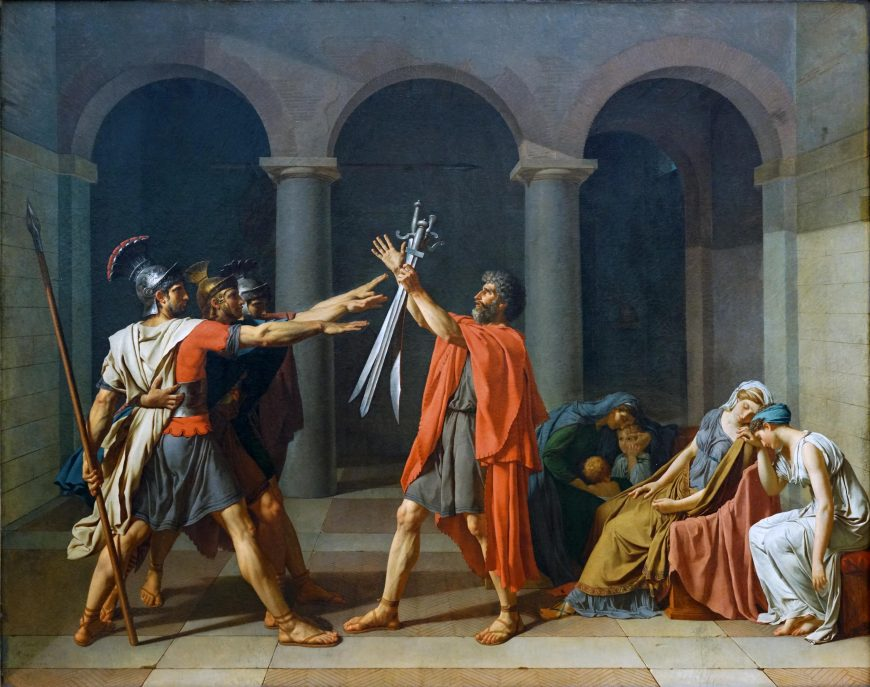
Artist: Jacques-Louis David
Title: The Oath of the Horatii, Salon of 1785, Louvre
-ancient ideals of freedom (sanitized, clean image of war
- idealized war before neoclassical, romantic
- going to war to protect the women and children
- history paintings: how to live and think about these moments!!
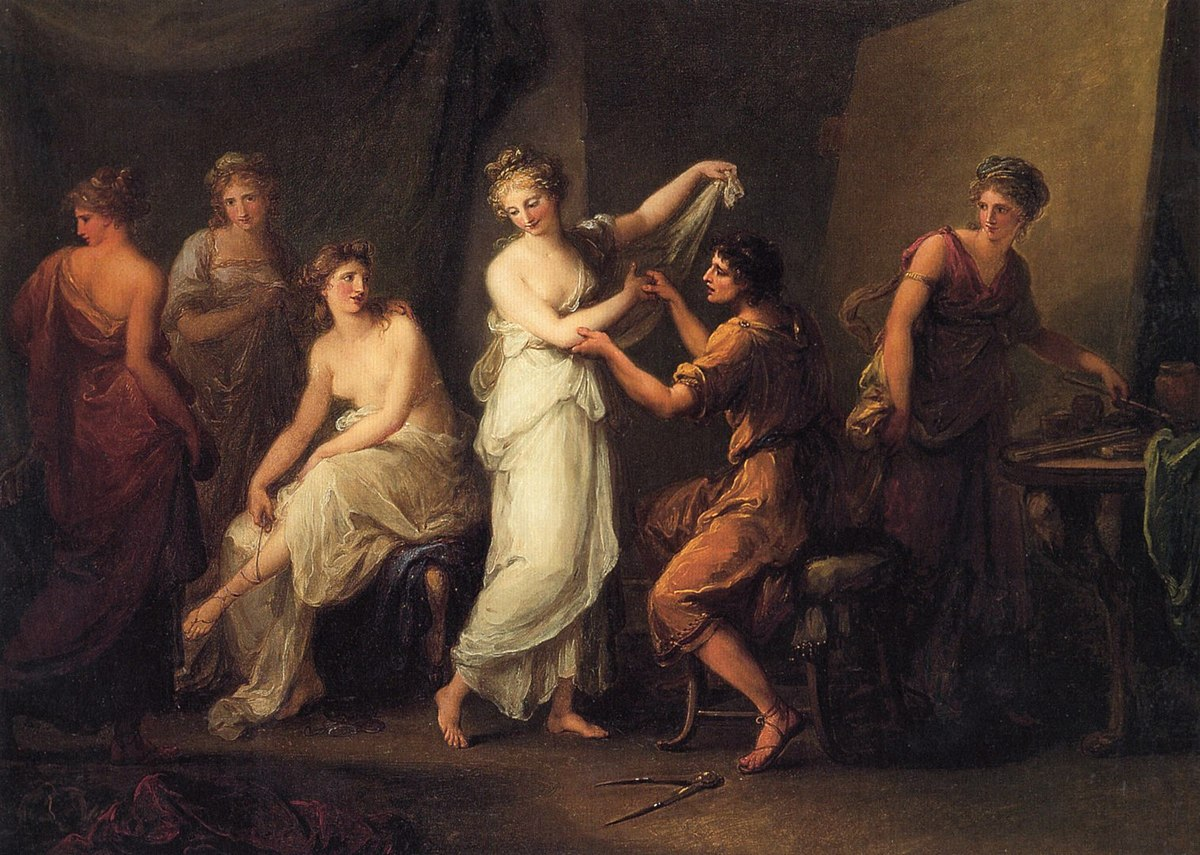
Artist: Angelica Kauffman,
Title: Zeuxis Choosing his Models for his Painting of Helen of Troy,
Year: 1775-80, Annmary Brown Memorial Library, Brown University,
Rhode Island
an allegorical representation of the artist's creative process, depicting Zeuxis selecting models for his depiction of Helen, emphasizing ideals of beauty and virtue.
-On Painting by Alberti: lighting, shadow contrast appears here pleasing to the eye
-Balance of colors with the red and pale skin white and brown background surroundings
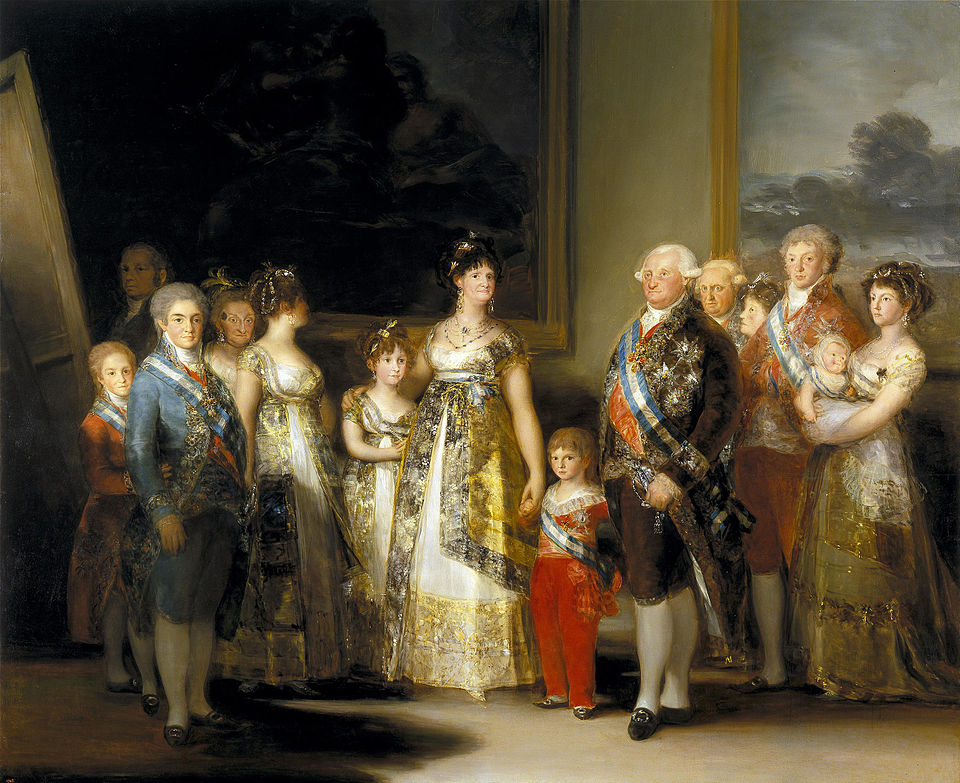
Artist: Goya
Title: The Family of Charles IV,
Year: c. 1800-1, oil on canvas, Museo del Prado, Madrid.
- we stand in as the King and Queen
- who is looking at who - spectator as object
- classically constructed painting
- art of painting- Velasquez (he’s the new Velasquez)
- showing you who is in charge (Fernando is next in line)
-The clothing is impressive, silk, satins, embrodiery, etc. fancy
-Their faces not impressive
These people’s faces show that they aren’t the smartest
-There’s incest, inbreeding
-These people are not intellectuals
-The court is very traditional, conservative and absolute monarchy in Spain
-The clothing is so bright, spectacular
-But the faces are not smart
Central figure is the queen in the center
-She had 20 pregnancies
-6 children living
-No teeth
-She is at the center, she is the focal point
-Painting is very staged (everyone lined up)
Similar to Velasquez:
-Use of light similar
-Paintings in background
-Goya (painting on left) includes Goya/the artist included with the canvas left side of painting
-Las Meninas artist included (painting on right) on the left side of the painting and the canvas back side
-The kids
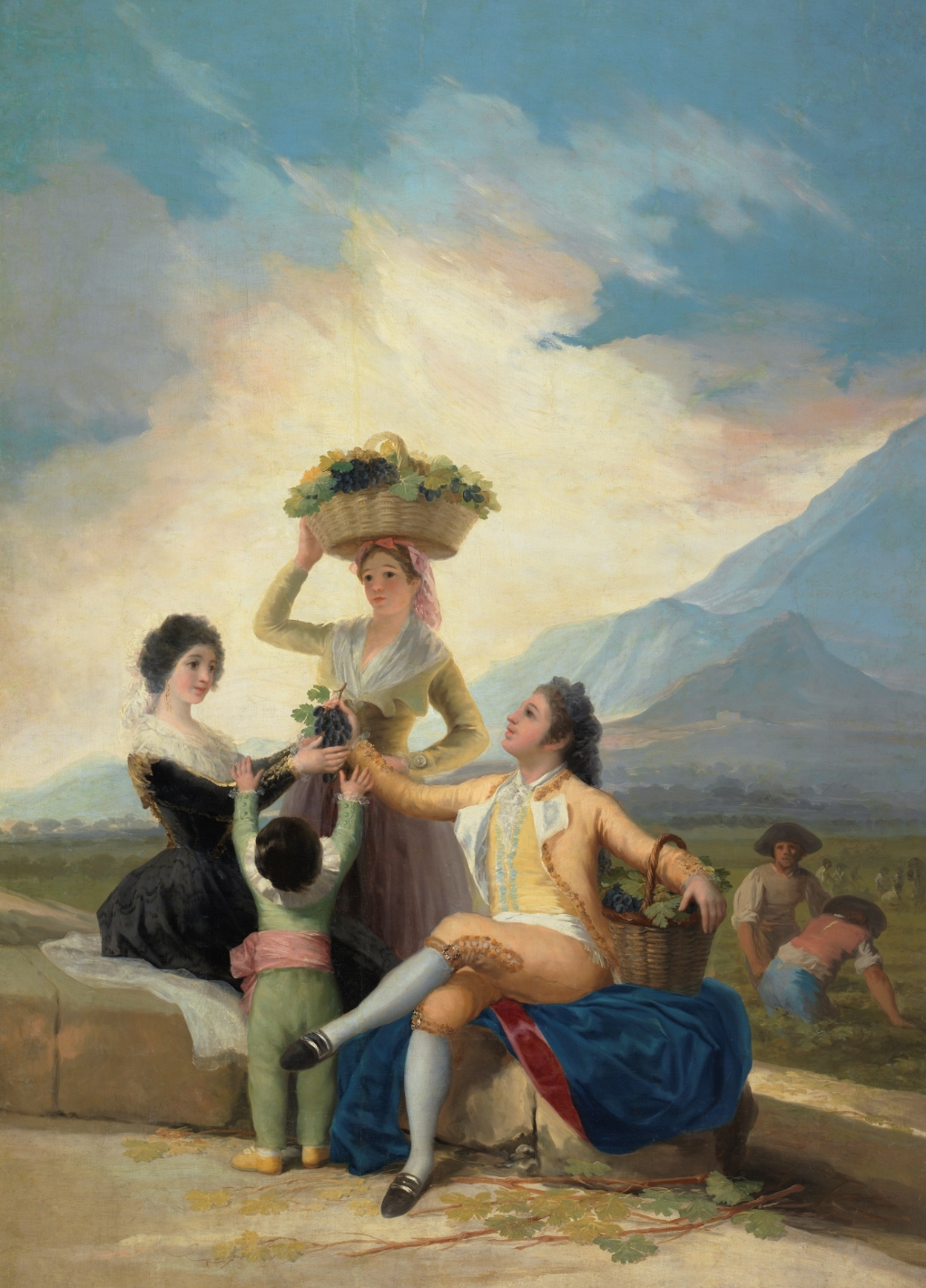
Artist: Goya
Title: Autumn or The Vintage
year: ca 1786-7, oil on canvas, Museo del Prado, Madrid.
about agriculture, harvesting in fields
-More aristocratic, more pleasurable, more designed to please a noble client
-peasants and aristocrat separate (guy peasant in background looks up to aristocrats, aware of separation)
-basket on top of lady’s head is tenuous (might fall)
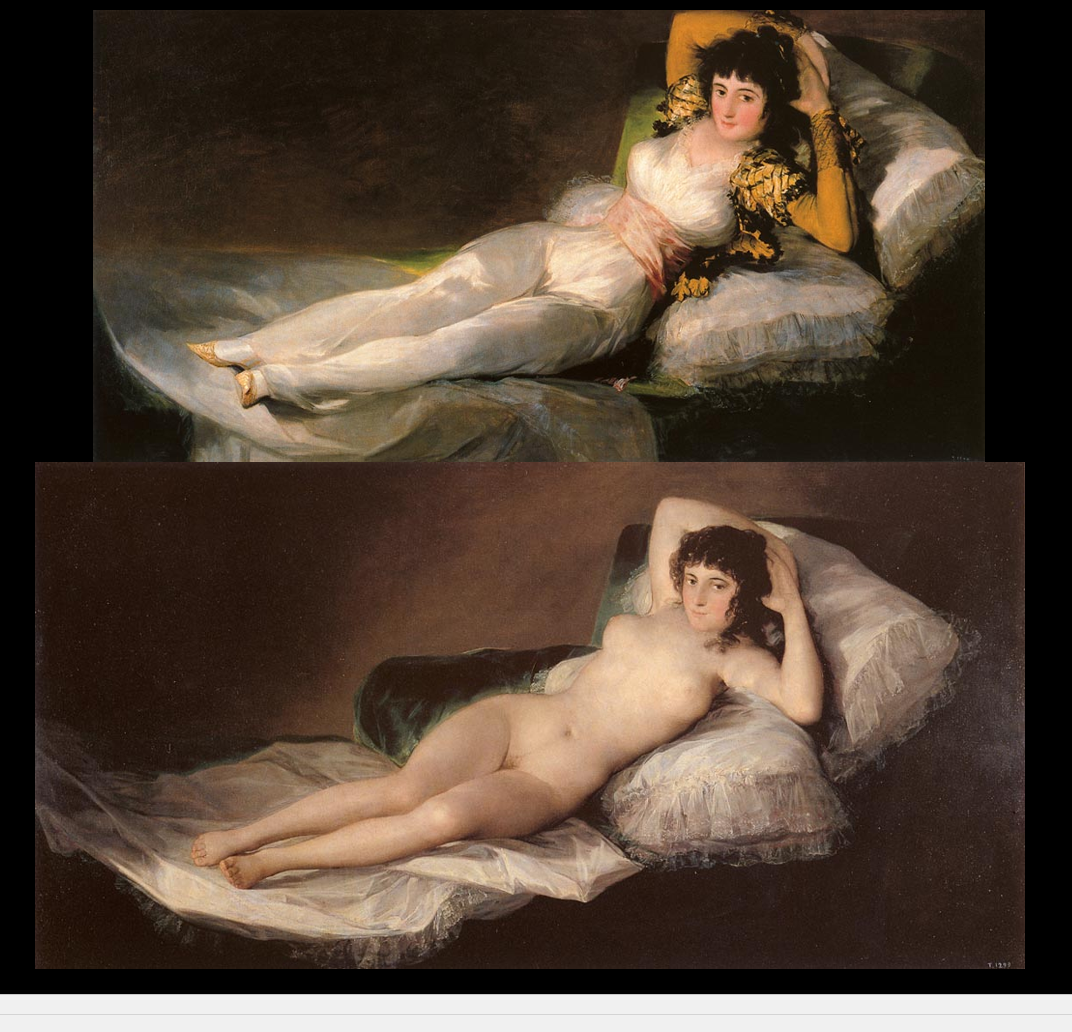
Artist: Goya,
Title: The Nude and the Clothed Maja,
year: 1800, oil on canvas, Museo del Prado, Madrid.
Goya, aware of Velasquez paintings of the nude,
_Goya painting (to the left) -> nude woman confronts you, is quite aggressive
-The Nude Maja -> the women on the streets, the true spaniards
The one with the clothes is more vulnerable
- she looks at you defiantly
- why are you looking at me like that?
- clothed as more vulnerable?
- changing the notions of Spain
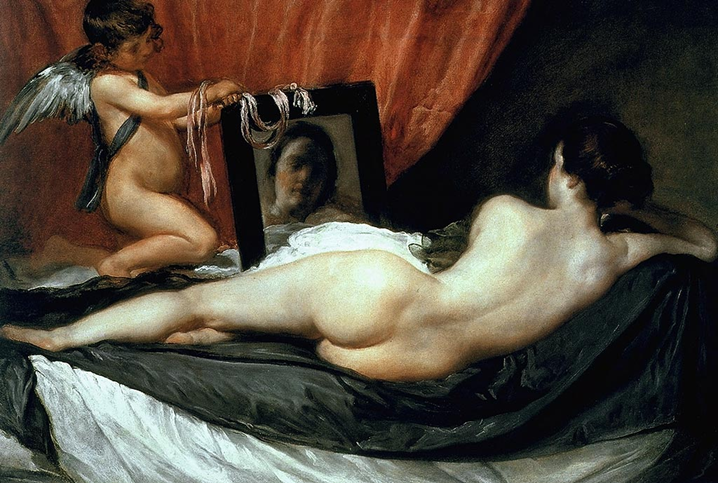
Artist: Diego Velazquez
Title: The Rokeby Venus,
year: 1646, oil on canvas, National Gallery, London.
Velazquez -> nude woman looks at herself through the mirror
-Nude woman -> I am the subject but am also the object
-We see the back of the nude woman -> plays with the genre of the nude
access to look at her - not available
- face of mirror - she can look at you
- illusion- subject vs. object
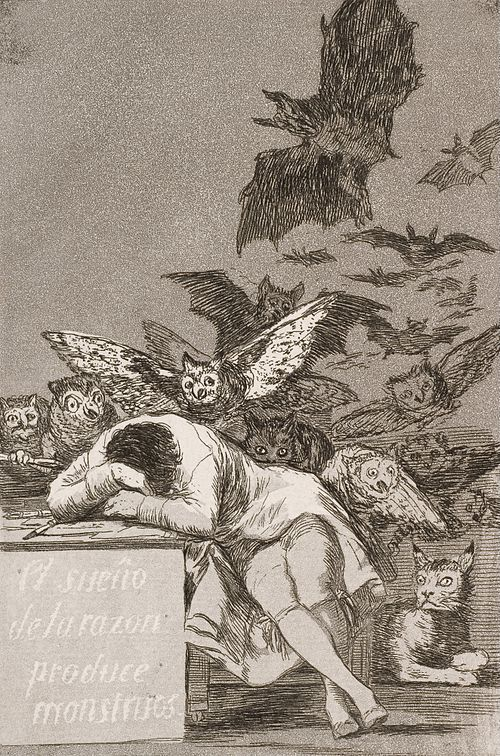
Artist: Goya,
Title: “The Sleep of Reason Produces Monsters” in Los Caprichos,
published 1799, etching and aquatint.
-During sleep, have dreams, have imagination/creation/monsters come out, inner desires come out (they are not rational!)
-Politics, declaration of independence, documents
-When people go to sleep, their monster come out
-Owls are melancholy, creepy, night
Goya says all of these enlightened ideas -> have led to death/murder/violence (Napoleon revolution example)
advertisement, satire, making fun of everyone
- intelligentsia - Los Caprichos
- back to our animalistic instincts
- asleep- imagination goes wild - dark side to ENLIGHTENMENT notion
- poking fun, darkness of humanity itself
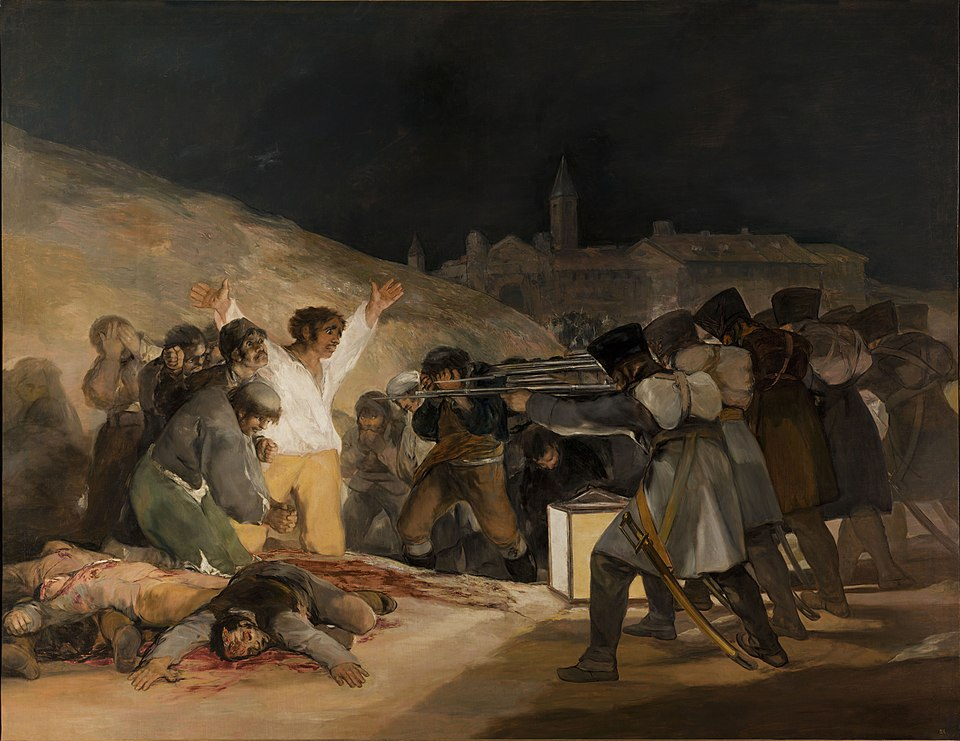
ARtist: Goya,
Title: The Third of May,
1808, painted in 1814, oil on canvas, Museo del Prado,
Madrid.
-Goya paints this violent war of the Napoleonic Invasion
-Goya paints history painting now:
-Events happening in current day
The guns are modernized warfare -> and it’s a firing squad, line people up, allows for mass execution
-Takes place at night
-Box of light allows them to see at night
-This is the first time we see this level of human destruction
- hands have holes, crucifixion
- human response to blood- pure sheer violent terror
- artificial light allowing this bloodshed to happen in middle of night
- internal emotion of impending death - gas lighting accentuating the fear, eyes (TECH)
- from the pueblo (the man)- people as martyrs
- industrialized killing
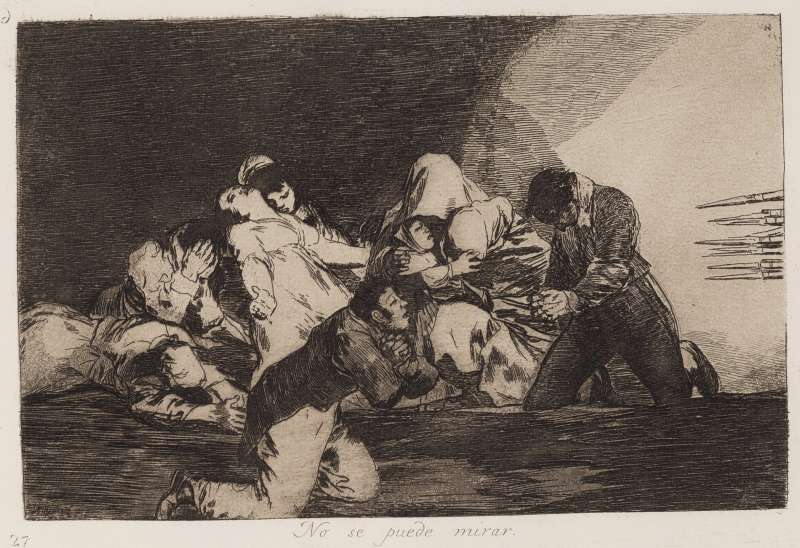
Artist: Goya,
Title: “One Can’t Look,” in the Disasters of War
1810-20, etching and acquatint
-Draws terror
-Human expression human facial expression shows terror
-black and white contrast
- more satirical than Capricios, you have to look
- comparison to NYT
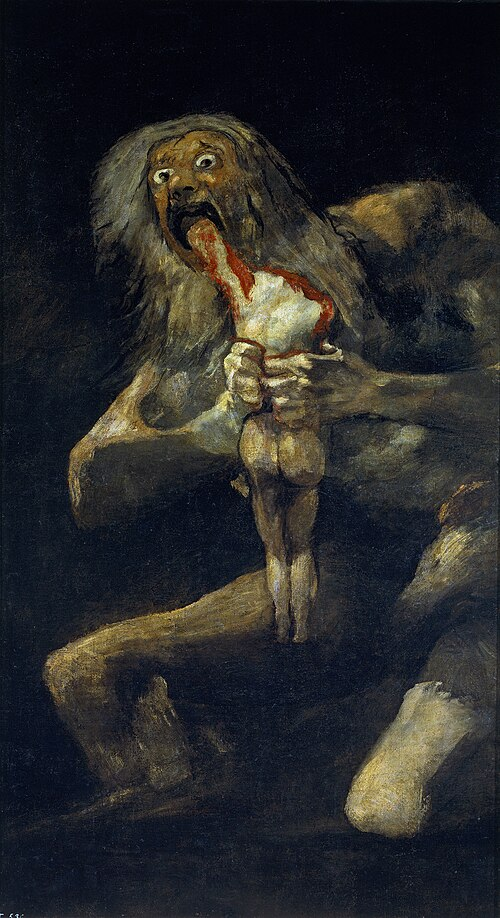
Artist: Goya,
Title: Saturn Devouring his Children,
1821-3, oil on plaster transferred to canvas,
Museo del Prado, Madrid.
-figure is a monster
-blood
-White of the eyes
-irrational thoughts are out there, very much present
- no face, fully formed human, Saturn has 0 god-like appearance
- monsters have fully come in
- reason is gone, darkness of the human condition again
- ID as the driving force (Freud), embracing of superstition
- light-> darkness
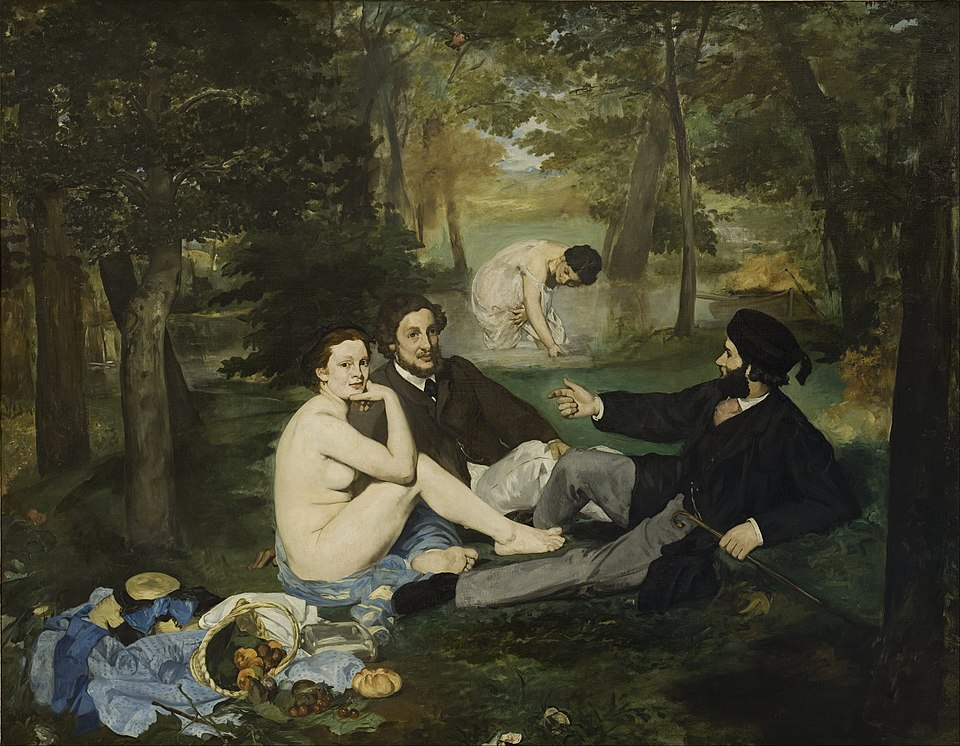
Artist: Manet,
Title: Luncheon on the Grass,
1863, oil on canvas, Musée D’Orsay, Paris.
The plight of the public --> the public don’t like these types of paintings --> but they are forced to look at them and try to understand them
-You take your own value system and question it
-Rapid domestication of the outrageous --> means the outrageous looking art, over time, becomes the norm --> the time we think something is outrageous and then becomes the norm is much smaller and smaller
Edward Manet --> Image on left
-People are horrified by this painting, jury rejects the painting
-Female nude looks like a regular woman and surrounded by clothed men
-This is not the mythological past
-This is the regular park
-She looks right at you, stares at you
-She calls you out as the viewer looking
- looking at you, contemporary Parisian
- flesh isn’t smooth or idealized
- skin is pasty, not appealing
- shocking, plight of the public-accepting new ideas, no longer just an object
- otium and arcadia, otium= feeling, arcadia= the place
- looked back to Rembrandt, Velasquez, Goya
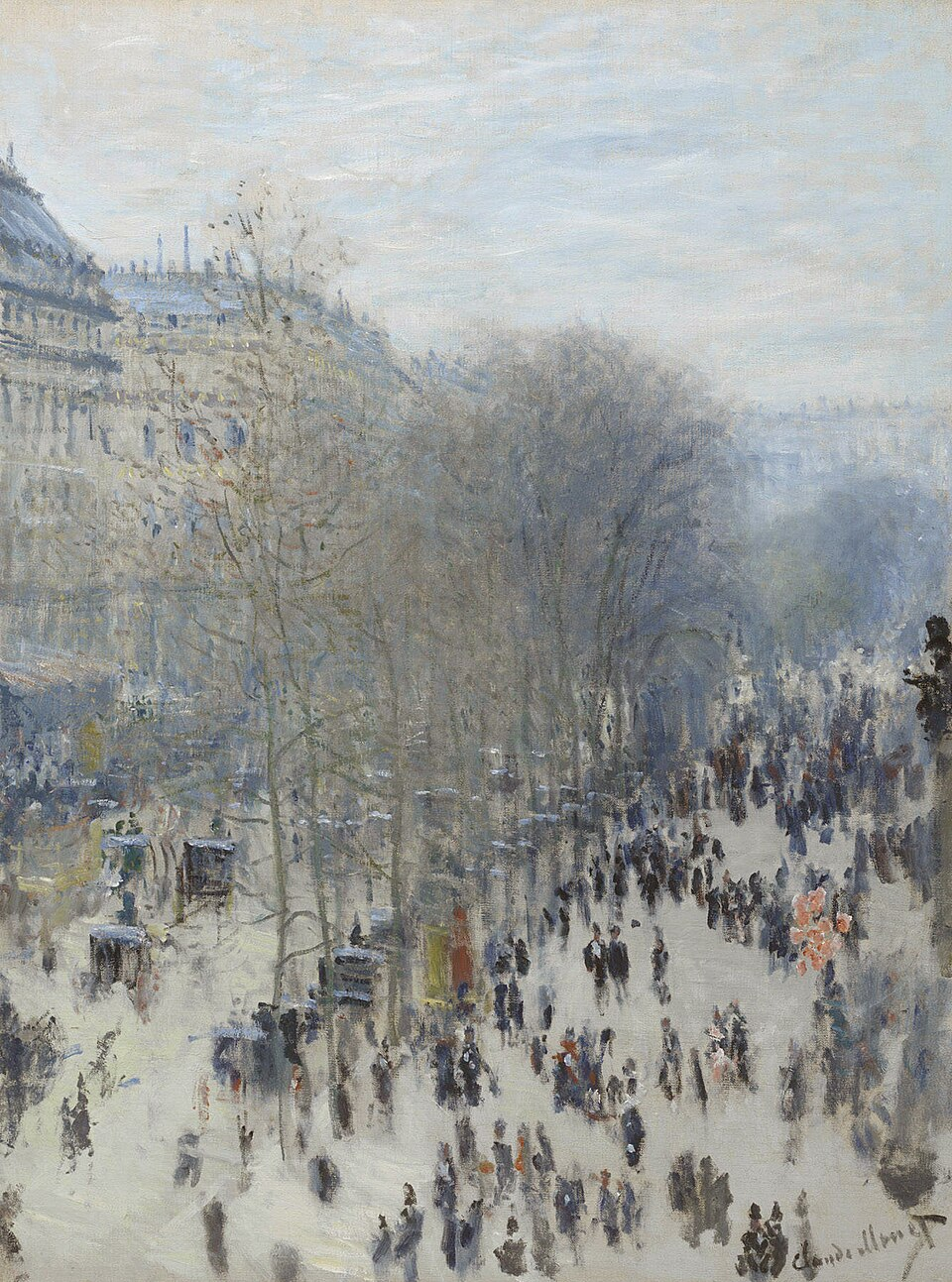
Artist: Monet,
Title: Boulevard des Capucines, 1873, oil on canvas, Nelson-Atkins Museum of Art,
Kansas City.
Monet -> the vibe/energy of the city -> the feeling of what it’s like to be in the city
-Those on the street
- movement, seasons, energy of the city
- sheer amount of people on the streets
- winter - prosperous, perpetual motion - feeling the temperature
- oil paint out of a tube
- capturing social mixing, optical consumption
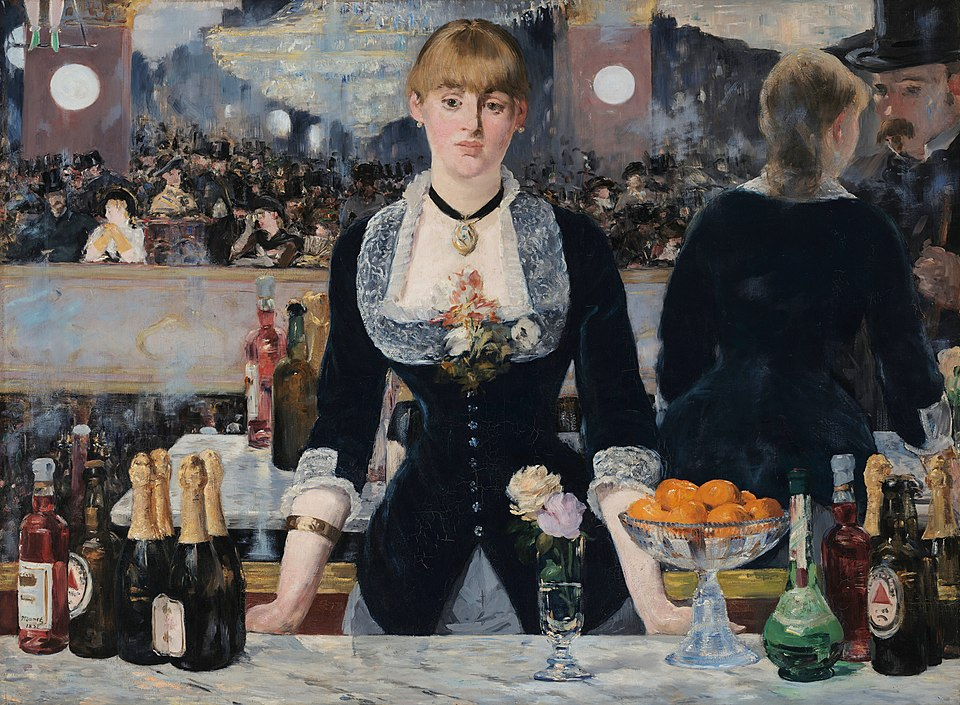
Artist: Manet,
Title: Bar at the Folies-Bergère,
1882, oil on canvas, Courtauld Institute, London.
Horizontal line (in background in the middle AND it aligns with the horizontal line of the bar)
-Vertical line is the woman (but then there’s her backside on the right side of painting, reflected by mirror --> which adds confusion)
-Mirror is an illusion
-Painting is also an illusion that doesn’t match reality -> shows paintings don’t tell the truth --> calls out the belief system that painting is a window of real world (in reality it is not -> it is an illusion)
-Woman is working (not staying home) -> very modern
-There’s isolation in her facial expression --> all these people coming around her but she looks lonely still
famous nightclub- looking @ acrobat in top left
- mirror=important - light source reveals crowd- shift to artificial lighting
- bar lines=horizontal and balcony reflection
- vertical lines= her and columns
- her reflection is off though from where you would expect it
- mirror is form of illusion as is painting- what he’s doing
- looking for spectatorship and illusion- forcing you to ask if what you’re seeing in mirror is real
- all about spectacle!
- woman’s appearance - bartender but clothes suggest prostitution- interaction with man at back/recall nude
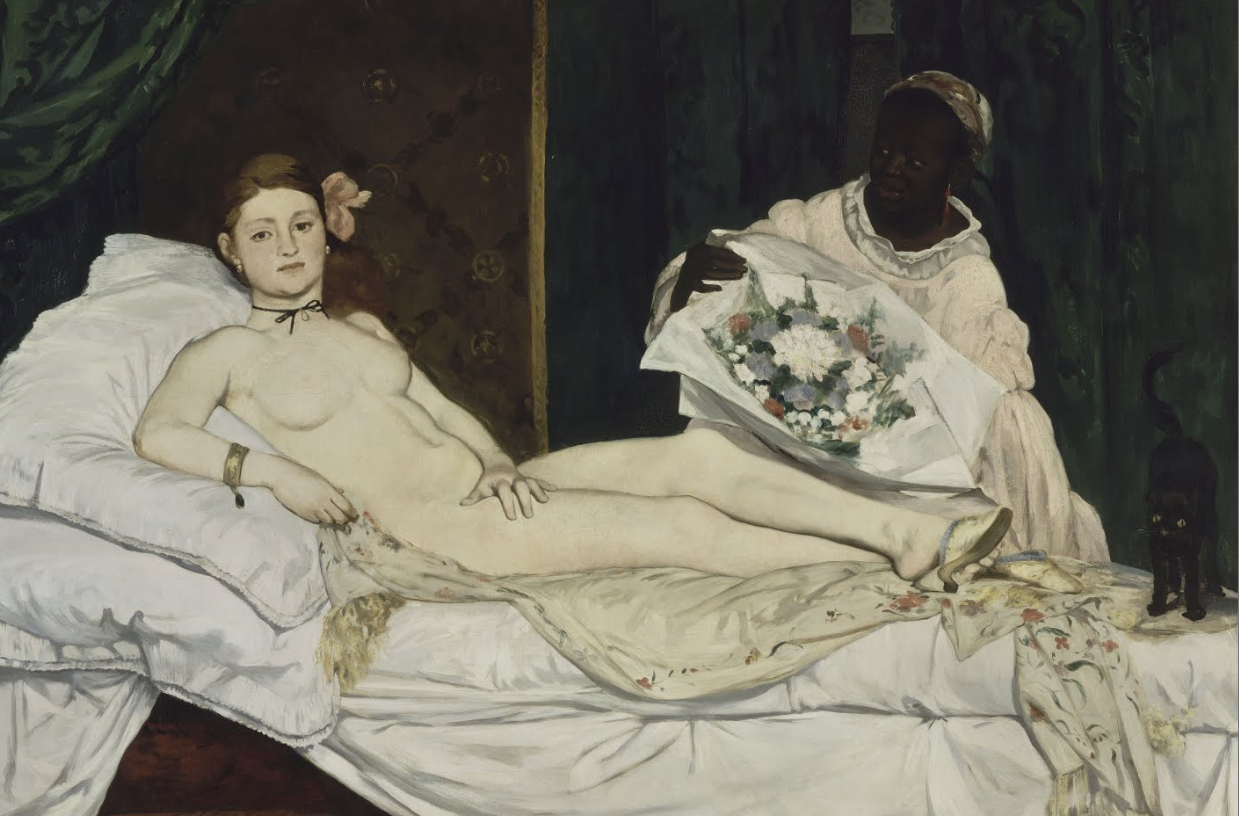
Artist: Manet,
Title: Olympia,
1863, oil on canvas, Musée D’Orsay, Paris.
-Discussion of race comes up
-Woman on left is a prostitute -> everyone in Paris would have known that immediately --> it is legal, very much part of modern life
-Manet takes the reclining nude -> and modernizes it -> showing that this is a businesses transaction (prostitution)
there’s Black woman, likely a worker at the Brothel, and there’s a black cat instead of a dog (representing darkness)
She suggests (with her hand), you have to pay in order to have sex
-White woman in painting (not idealized, not perfect0
- taking pose from Titian
- nude
- dog=fidelity but this time we have a black cat- sinister
- woman bringing flowers
- updating works from past and bringing them into modern times- prostitute based on hand positioning meaning you better pay up
- flesh looks dirty and hand is pale
⅛ women involved in prostitution at this time
- sadly common but not talked about - her hair is actually down but somehow it looks uptight
- Baudelaire’s call to “paint modern life” this is intended to do that- remind people of their surroundings
- this is the break from traditional nude- challenging the academic nude
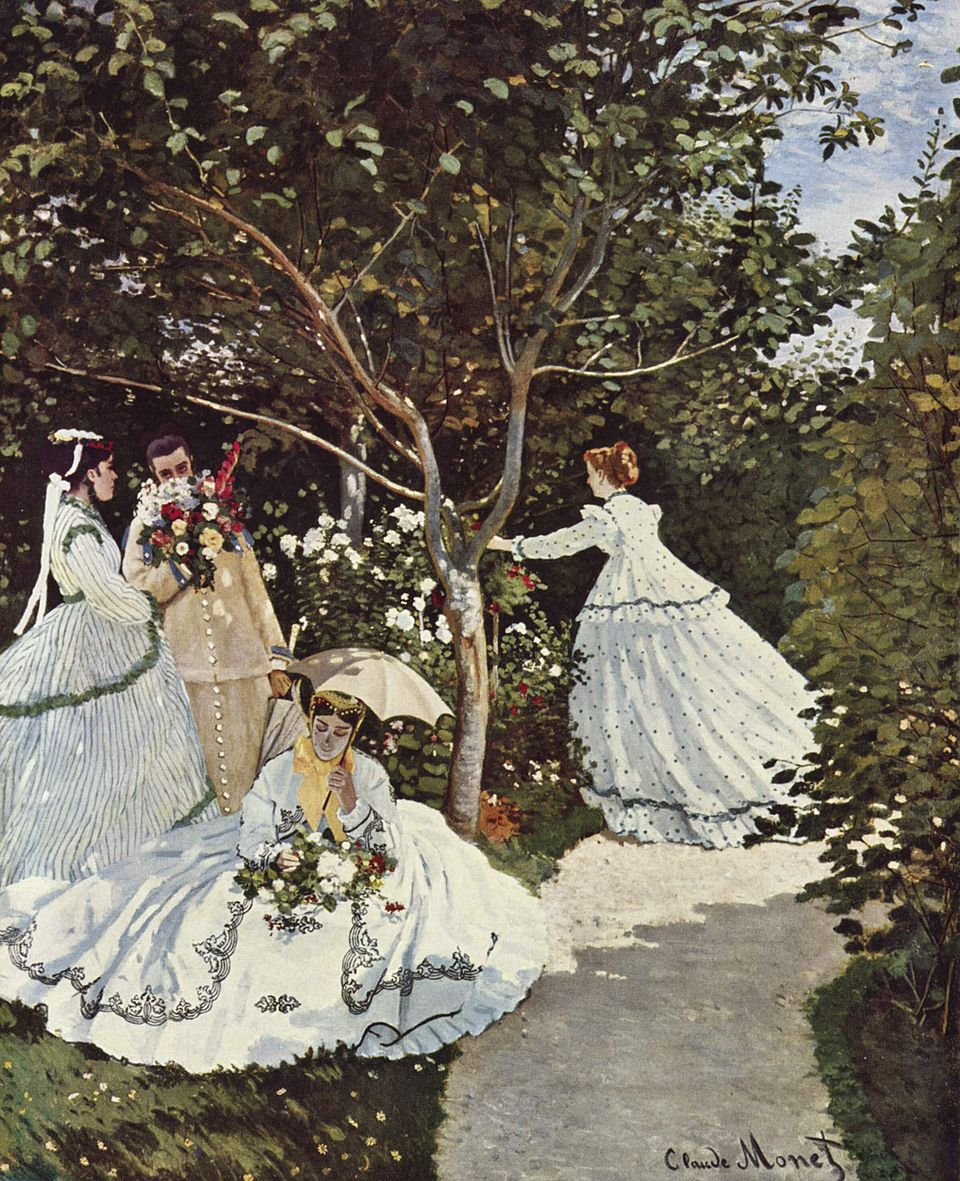
Artist: Monet,
Title: Women in the Garden, 1866, oil on canvas, Musée D’Orsay, Paris.
-The shading is not sophisticated -> it is not perfect colors (woman’s dress has shade of purple in its shadowed parts)
-Monet captures reality -> these fancy people are not happy with it because
-Arcadia (natural world) --> offers you relief from daily life (peace/quietness)
-Virgil writes about this concept of Arcadia
Petty Bourgeuise bring their modern items to the natural world (Arcadia) --> as a result this is not Arcadia (Arcadia is the peace of the natural world, no modern items) --> These people bring picnic blankets food, etc. as a result this is not Arcadia
- bright colors - no shadow- just blobs- putting it same way we see it
- using color totally new way - lavender on dress b/c of sun rather than shading
- celebration of arcadia and petit bourgeois etc
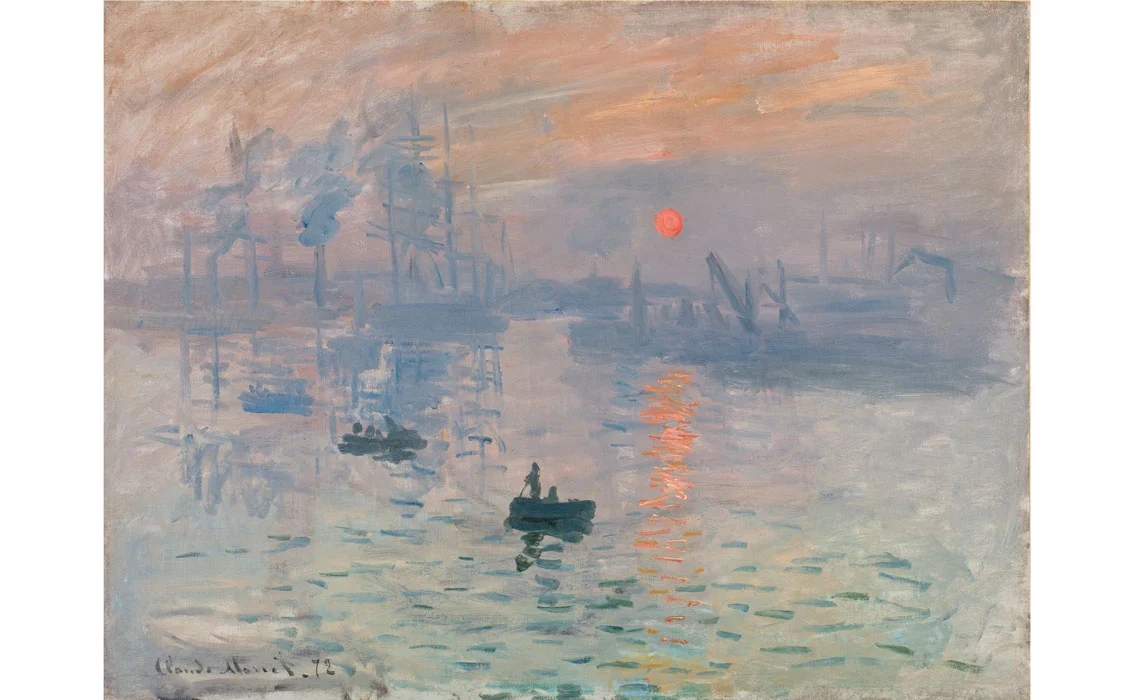
Artist: Monet
Title: Impression, Sunrise,
1872, oil on canvas, Musée Marmottan, Paris.
Painting looks spontaneous
-Hazy and the sun is setting, specific moment of time
-Industrial port, painted very spontaneously
-Use of water to show illusion and mirroring
-Monet not interested in human figure (painting on right) more of landscape/water
- no defined lines, blobs of color, use of water
- horizon, objects reflected in water itself
- sense of industry
painting as optical NOW
- water reflecting light phenomenon
- striking contrasting colors
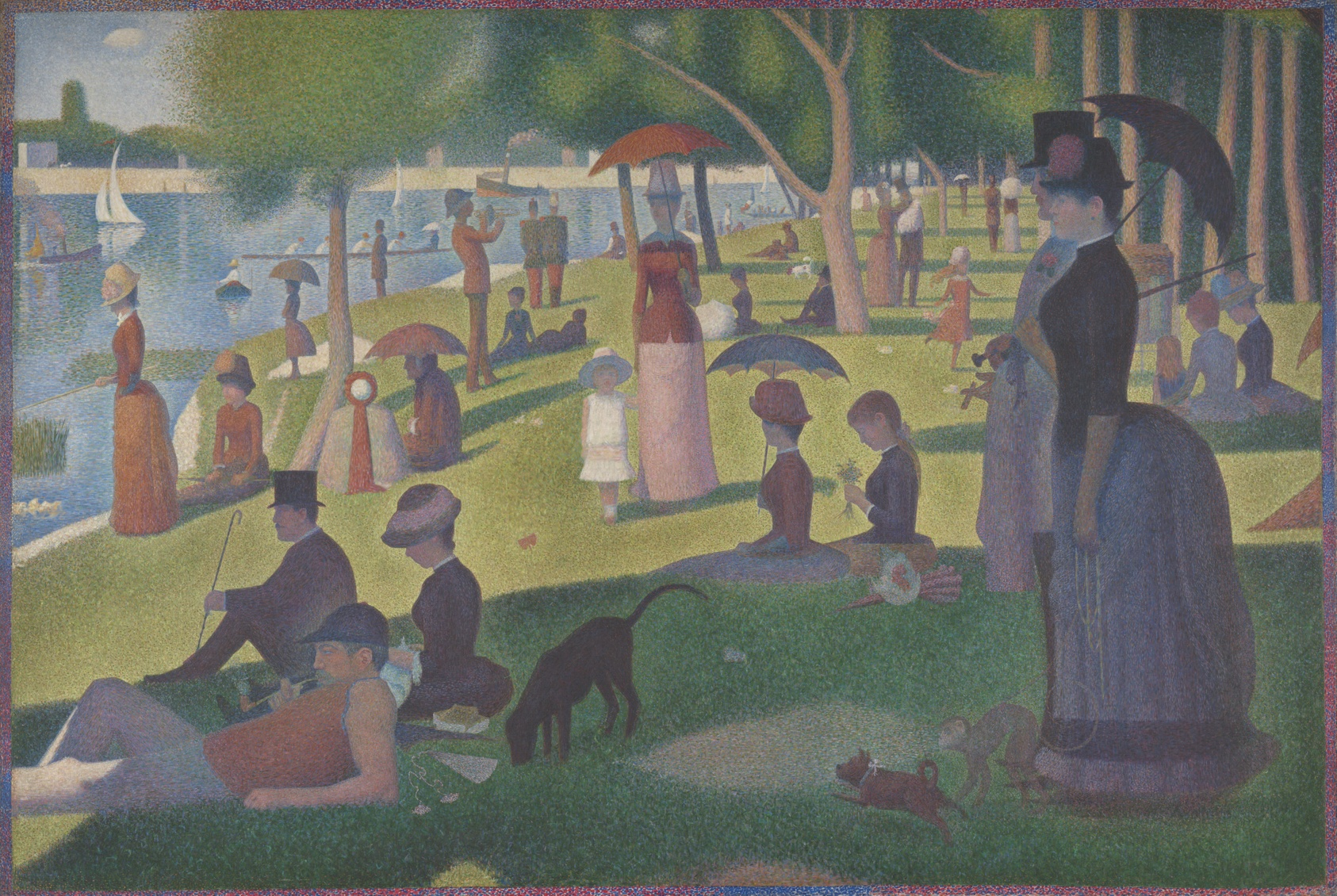
Artist: Seurat,
Title": A Sunday on La Grande Jatte
– 1884, 1884, oil on canvas, Art Institute of
Chicago.
People all in their own spot, not interacting --> and it is what the painting technique very much requires (painted with dots)
-People of all walks of life coming together in this park --> but without the joy of it! Everyone is separated
Seurat spends MONTHS on his paintings (dots and dots)
- neoimpressionist
- dots of color, scientific perspective, being outdoors
- Sunday in the Park with George
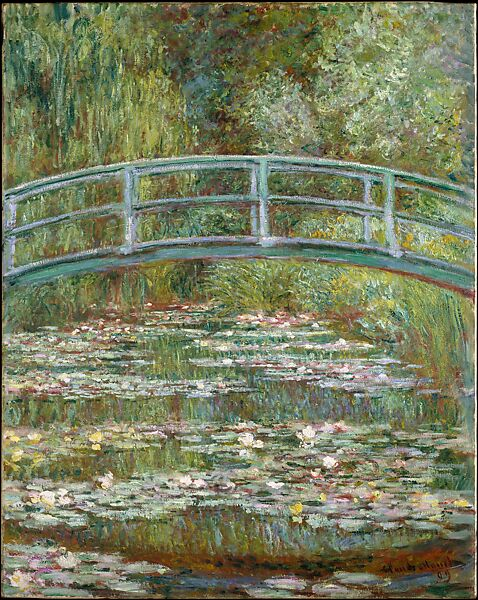
Artist: Monet,
Title: Bridge over a Pond of Water Lilies, 1899, oil on canvas, Metropolitan Museum
of Art.
at end of 19th century -> he becomes very popular and rich
-He buys a plot of land (in side of Paris?)
-He gets a permit from town to redirect river and builds a lily pond
-Then he paints this pond
All the trees, flowers, ponds, bridge all built by Monet!
Monet use water as reflection
-Japanese aspect comes in to play with the idea of garden/nature
-Bright colors of flowers and garden
-Landscape, removed from urban world (similar to Japanese prints)
Monet just captures what he sees (reflections of trees/clouds/sun in water!)
-It is revolutionary on one hand but on other hand it is also just the same straightforward way of painting what you see
- Japanese prints in his house
- older, purpose of painting changes
- everything particularly constructed
- water depth reflection plants sky and water in one
- you see surface, can’t see what’s below but we know there is something below
- natural world, contemplative state - orthogonals with bridge
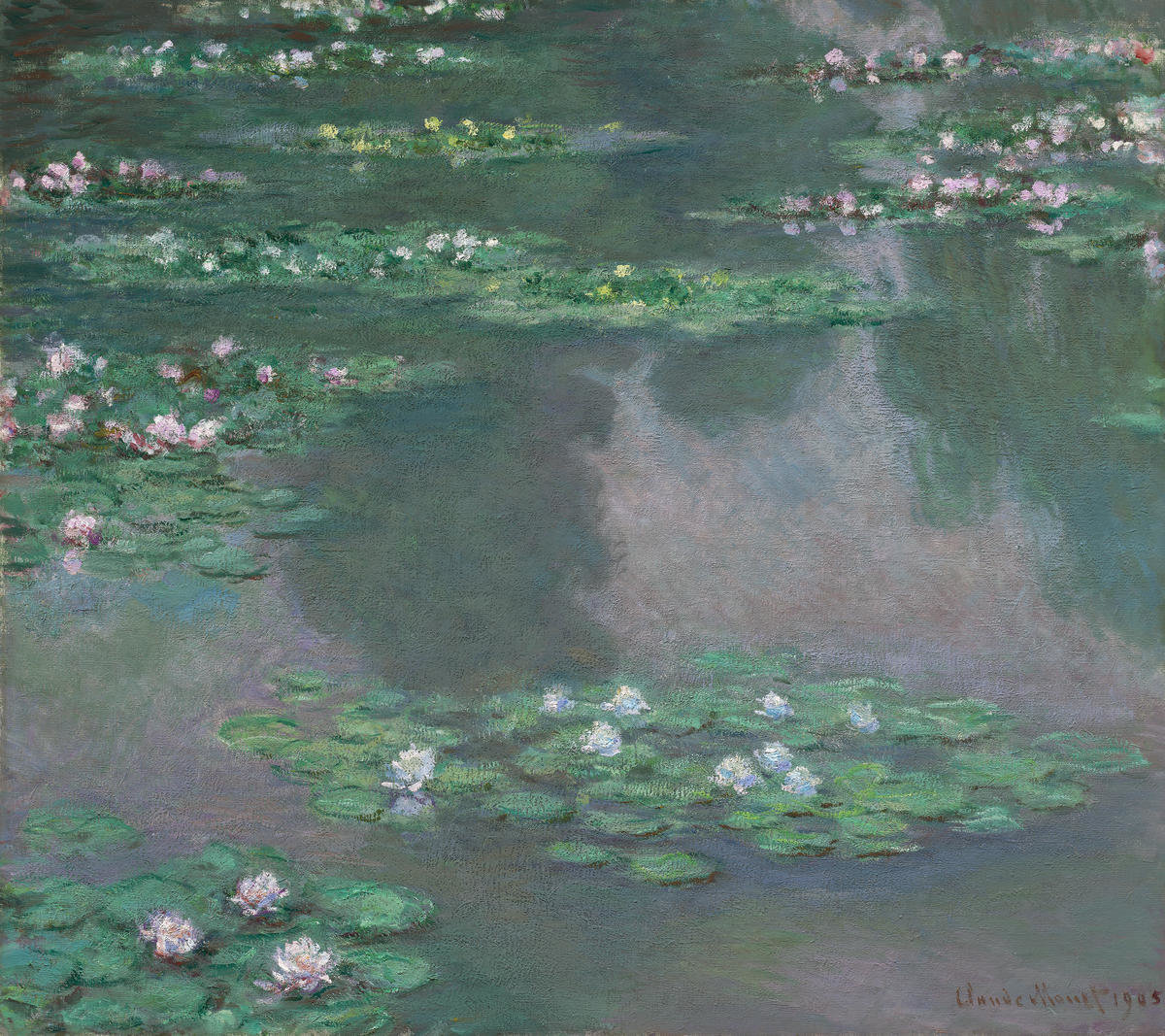
Artist: Monet,
Title: Waterlilies I,
1905, oil on canvas, Museum of Fine Arts, Boston
he might be in a boat surrounded by water -> has reflection of trees in water -> shows the sky and clouds
-The background is in foreground (Background and foreground are fused) pushes the bounds of thinking about what painting should do!
Monet just captures what he sees (reflections of trees/clouds/sun in water!)
-It is revolutionary on one hand but on other hand it is also just the same straightforward way of painting what you see
- you have no idea where you are, no sense of day and reflections on water
- no sky
- inverted reflections
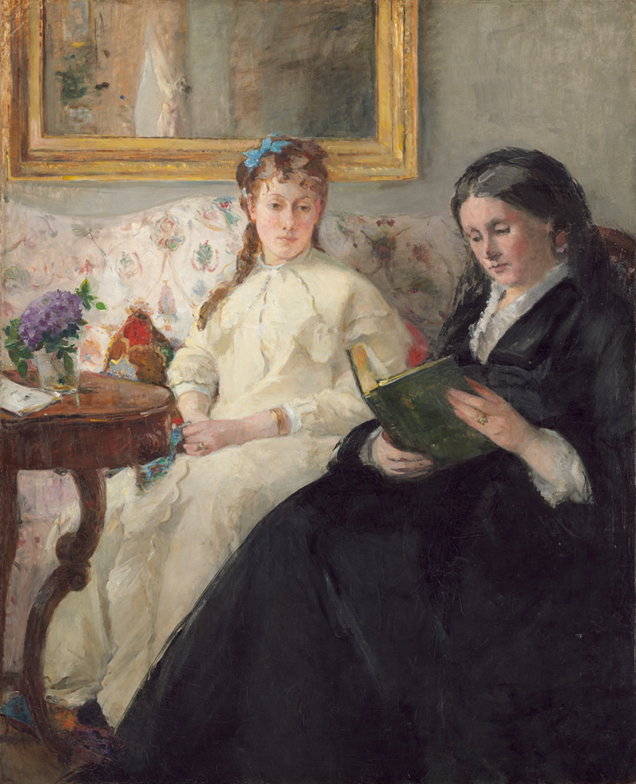
Artist: Berthe Morisot,
Title: Mother and Sister of the Artist, 1869-70. National Gallery of Art,
Washington, D.C.
Morisot is impressionist work --> she is painting what she sees
-The technique is very light, sketchy, quick, rapid --> based on what one sees --> doesn’t follow the techniques taught by academy
-Morisot more interested in the figures/humans (painting on left)
-Monet not interested in human figure (painting on right) more of landscape/water
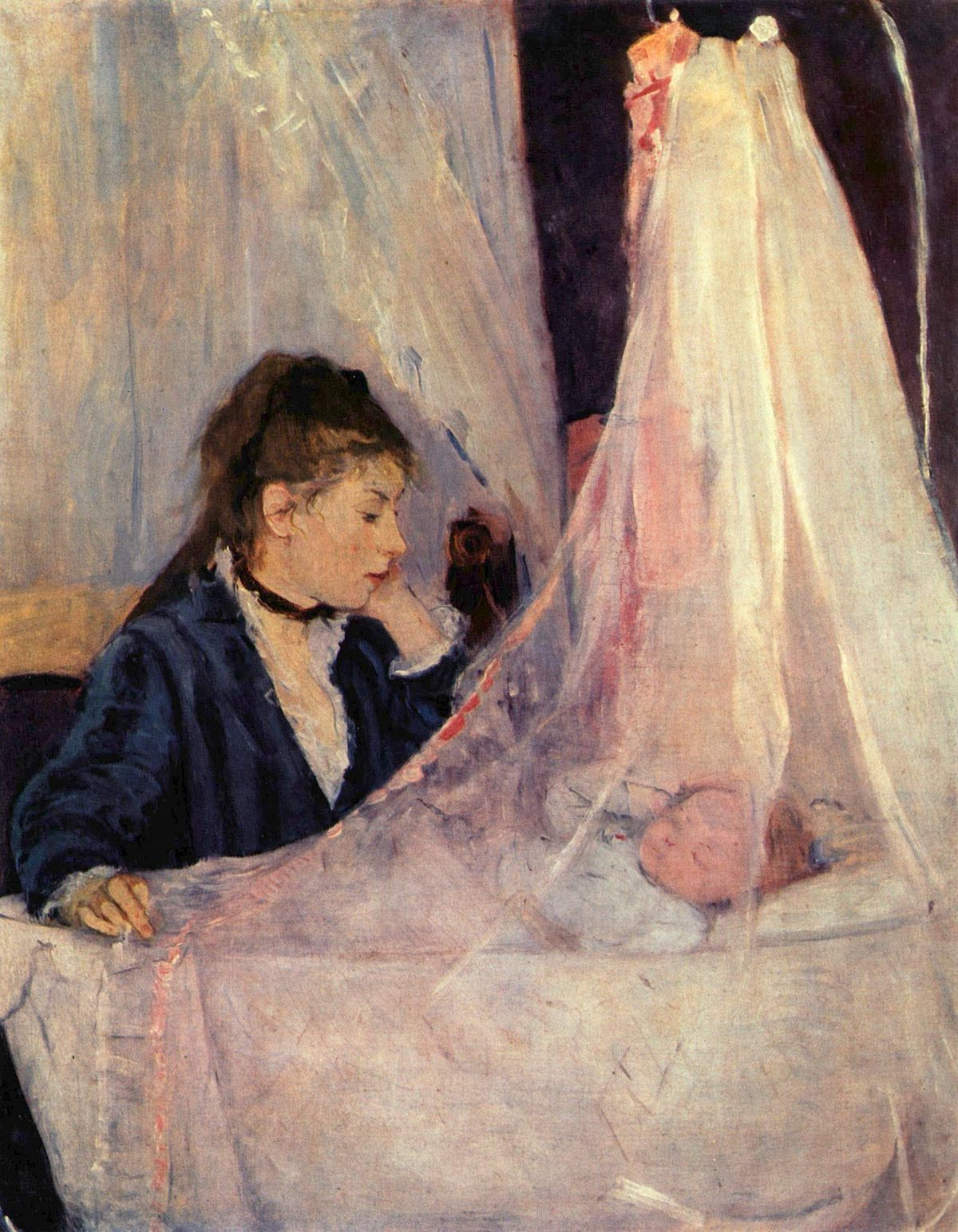
Artist: Berthe Morisot,
Title: The Cradle,
1872 Musée d’Orsay
furniture of baby bed/cradle (a modern picture) Morisot
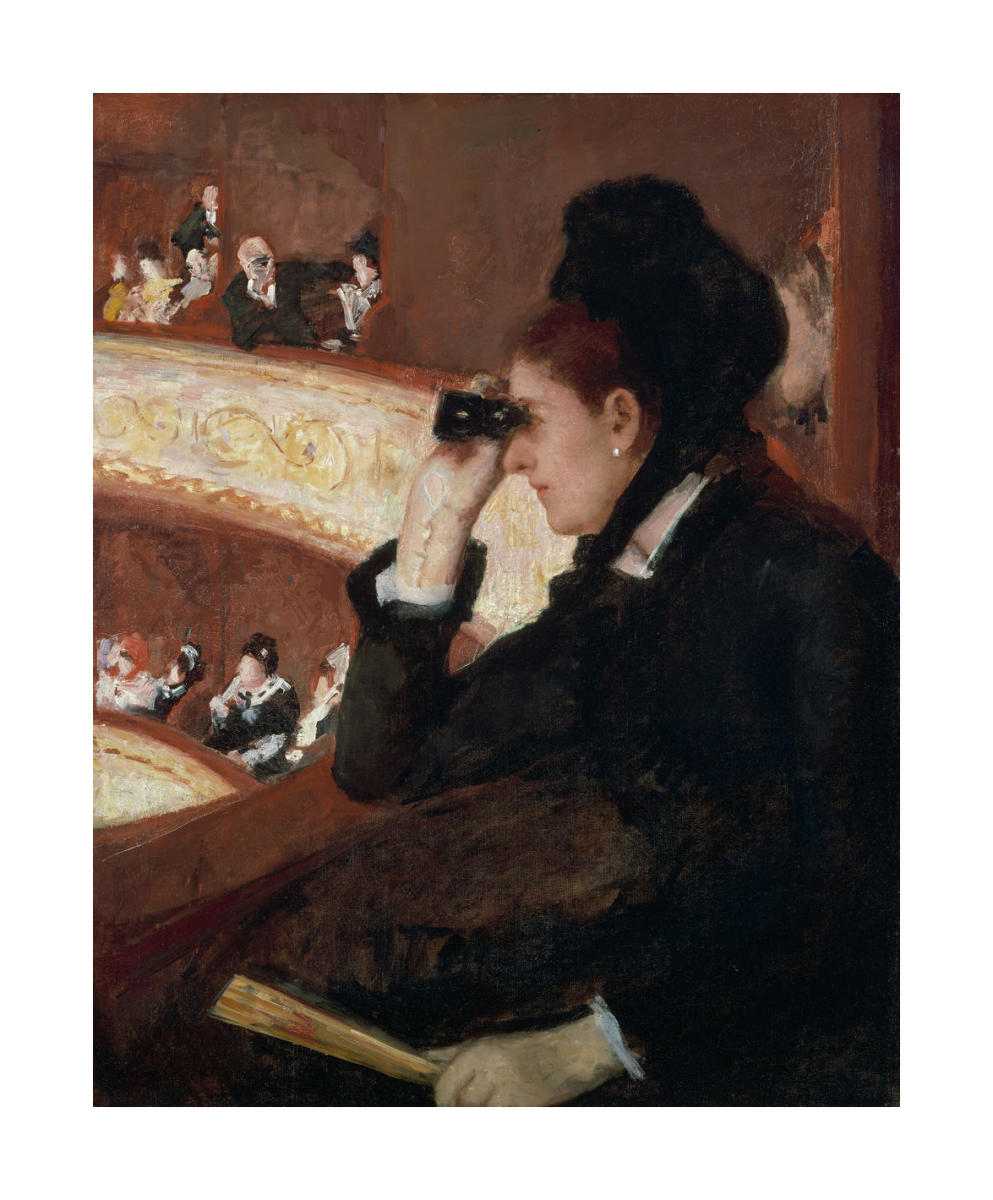
Artist: Mary Cassatt,
Title: In the Loge (At the Opera),
1878. MFA Boston
Cassatt --> goes to the opera, has less restrictions about her life --> so she paints this painting depicting being at the opera
Opera -> is filled with mirros, electric lights, a place for audience to see each other --> see your gown that you’re wearing
-not seen with a man, watching the show
-Guy on left looks at her (and she ignores him! And she watches the show) -> defies gender norms
-She says “I am not the viewing pleasure. I am not the object. I will be the one viewing the show”
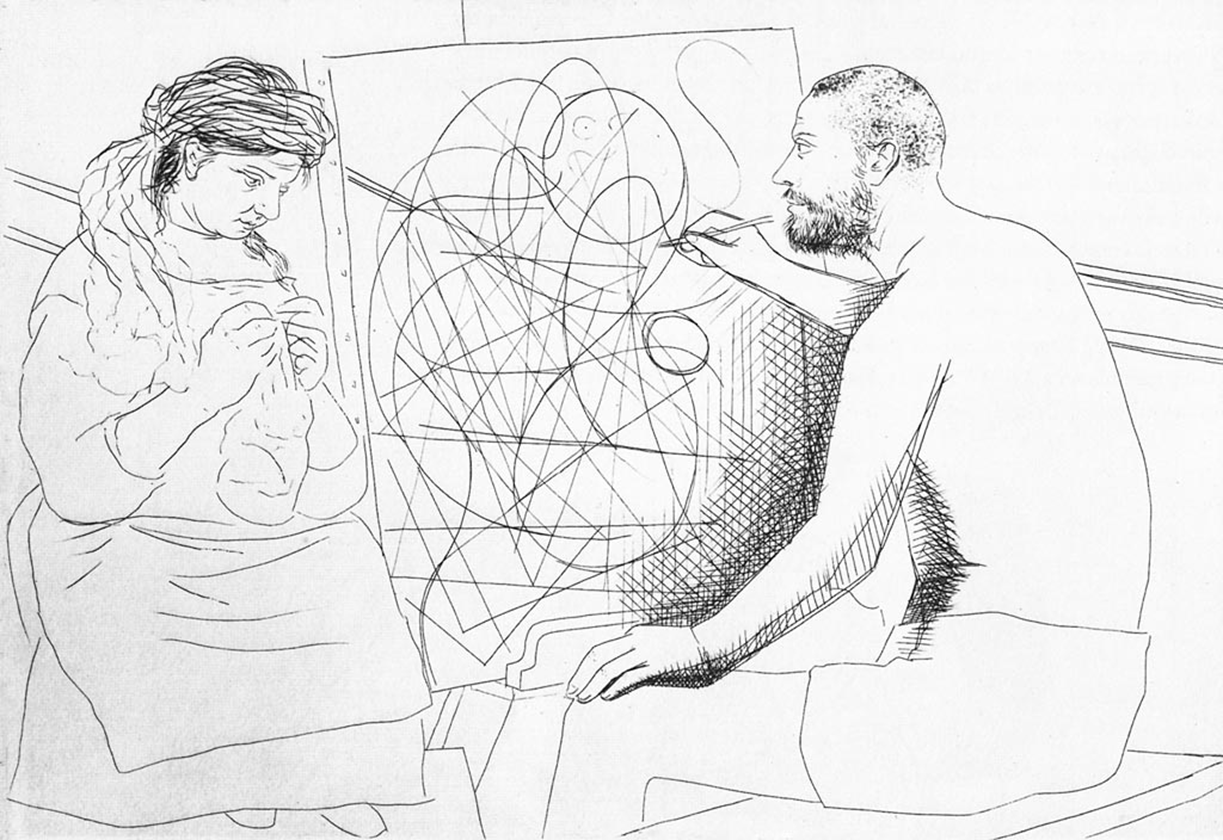
Artist: Picasso,
Title: Painter with Model Knitting,
1927, etching, Museum of Modern Art, New
York.
Picasso wants to understand what are the essential lines you need to understand the human form
-Get at the essence of the forms - that is the goal of abstraction
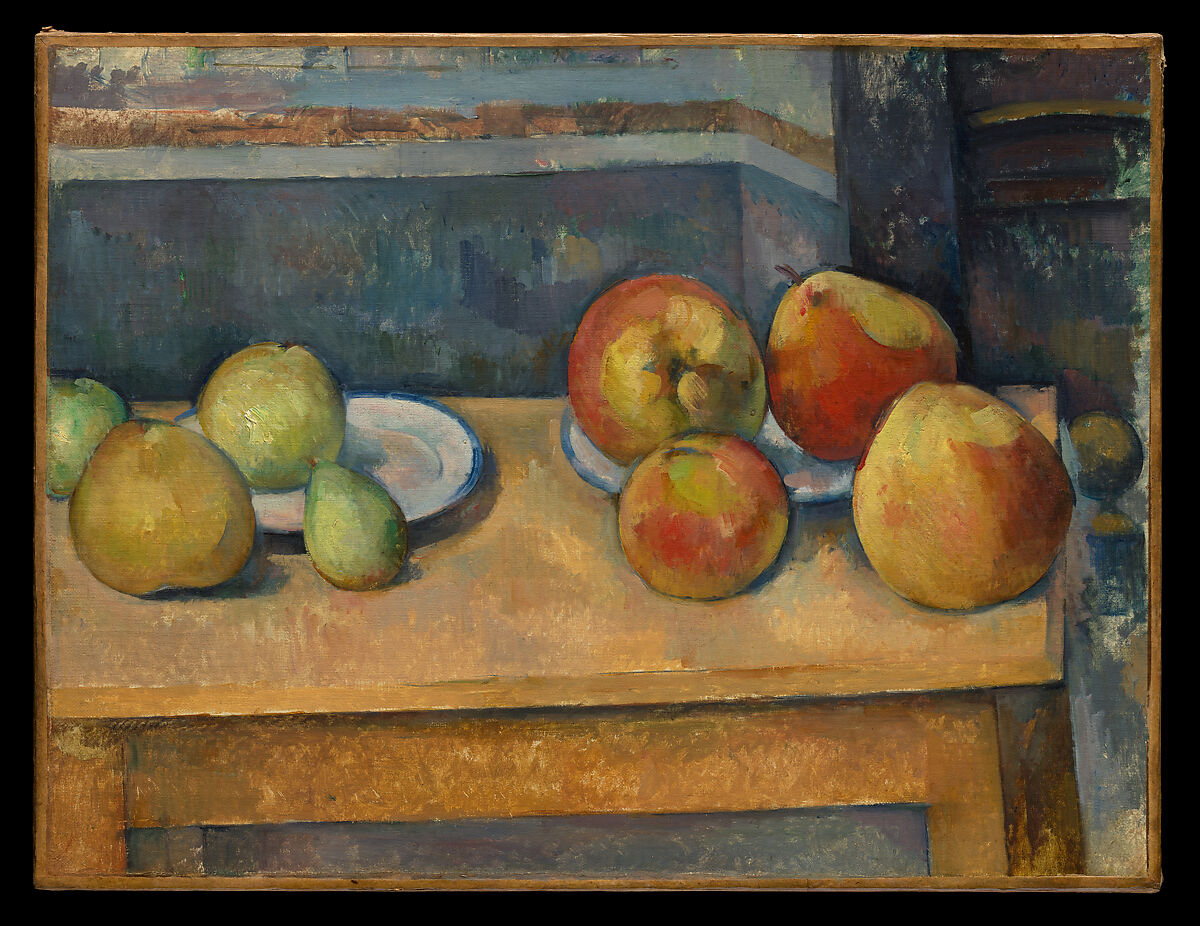
Artist: Cezanne,
Title: Still Life with Apples and Pears,
1891-2, oil on canvas, Metropolitan
Museum of Art.
-Still life
-Color is most important
-Use color to create form -> makes you want to pick them up -> color helps create the 3d form of the apples
-Spheres, cubes, cylinders, cones
-No clear vanishing point (no single point) instead there are multiple points
-When you look, you don’t see just one thing (you have peripheral vision too) -> Cezanne points this out in his paintings -> his paintings are more dynamic -> not just one vanishing point but you look around the painting
- giving you a sense of 3D, you can see behind apple
- can reduce world to sphere, cylinder, cone
- they are not still lives, vibrant, apples look like they could fall off
- color representing volume
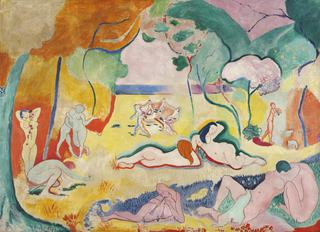
Artist: Matisse,
Title: Joy of Life,
1905-6, oil on canvas, The Barnes Foundation, Philadelphia.
-Matisse painting on right
-Matisse plays with colors more -> more saturated, pure colors
-Matisse says these are the basic joys of life (eating, dancing, going to beach, etc.)
-Matisse gets at essence of forms but also essence of who we are as humans
-By getting at abstract form -> it is pure unadulterated joy -> anyone can relate!
- tiny brushstrokes, making arcadia
- timeless abstract - removed from any temporal moment
- pushing avant-garde envelope
- simplifies forms through bold and flat color
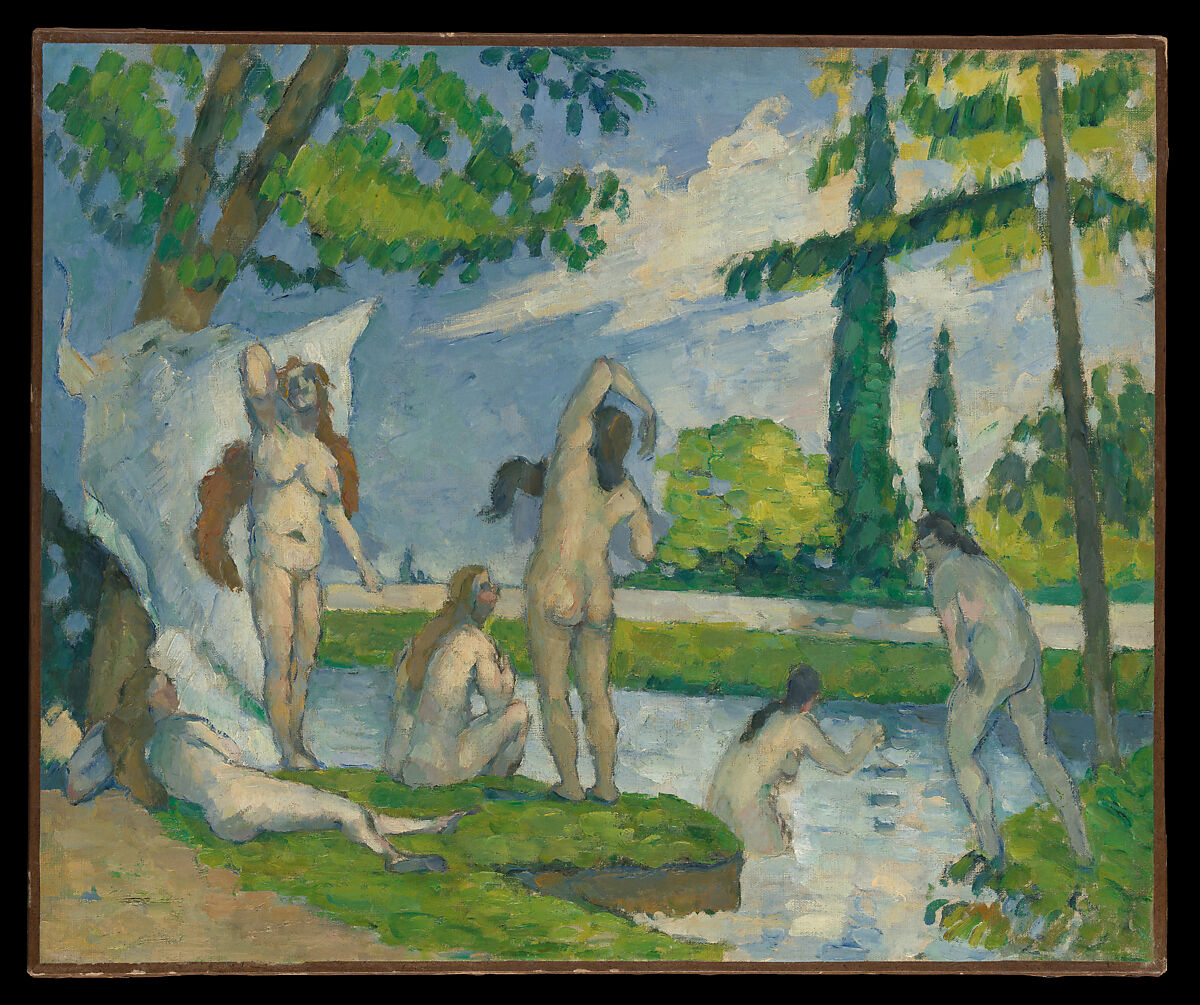
Artist: Cezanne,
Title: Bathers, 1874-5, oil on canvas, Metropolitan Museum of Art
- color as crucial to flatness reduction
- bolder more saturated oil paints
- found this to be offensive (critics)
- with a turtle- blue- sad
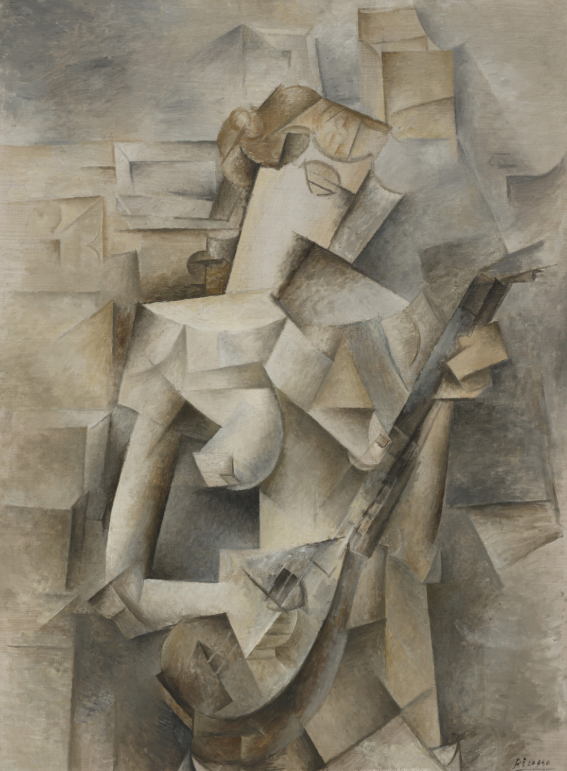
Artist: Picasso,
Title: Girl with a Mandolin,
1910, oil on canvas, Museum of Modern Art.
Cubism style
-Picasso breaks down the forms of the woman and Mandollin and plays with the forms
-Makes you question the whole purpose of the painting and the forms of the painting
-Everything sitting still as objects in world are actually made up of many atoms that are moving (everything is dynamic!)
-Einstein: Theory of Relativity
-Nothing is stable in the world -> everything is relative
-This was disorienting for people (people believed objects were still but they are actually moving)
Time becomes constructed in 19th century: because of industrialization -> such as we need to catch a train by a certain time
- no color, no lines of form, sense of depth taken away
- paintings as illusory
- no perspectival space
- everything becoming weightless
- must be monochromatic to focus on forms
- no longer in one specific space

Arist: Picasso,
Title: Les Desmoiselles d’Avignon,
1907, oil on canvas, Museum of Modern Art.
-Picasso: This painting is supposed to disturb you
-Name of Painting: This is the name of a brothel
-Faces look like masks
-African masks
Colonilaism (Europeans colonize Africa) --> so now African masks become more prevalent in places like Paris (Where Picasso was painting)
Mask breaks down the face into essential shapes (appeals to Picasso!)
Table with still life (Fruit) -> brings you into the space of the painting
-Assumed that the viewer of this picture is male
-Women on left pulls curtain onto the side, lets you into the space
-White color is the bed sheets
-Blue is the sky
-So Picasso gives you foreground, middlegorund, background through curtain, table, collors
- reevaluated why you are looking at art
- long dark hallway to encounter the women - we are atop of them
- table as crucial, entering you into the scene (phallic?)
- curtain like Raphael, opening up visions to Heaven
- viewer as crucial, bringing all figures together - confuses mass and space, things get taken apart
- sexual motion of in and out= interacting with us, primitive form of sexuality is engaged
- critiquing Joie de Vivre= everything isn’t full of joyous sex by the beach
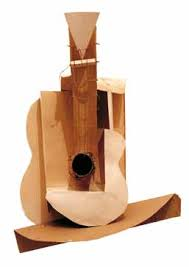
Artist: Picasso,
Title: Guitar,
November 1912 Cardboard MOMA
Picasso uses paper for his sculpture/colalge
-Paper expected to be used for drawings/paintings
-Paper as sculpture was unusal for the time
-Sculpture is meant to be lasting/permanent (paper is not permanent)
-Sculptures meant to be monumental, speak to large issues (economy, political, etc.)
-Picassos sculpture is underwhelming (a guitar is not worthy of sculpture)
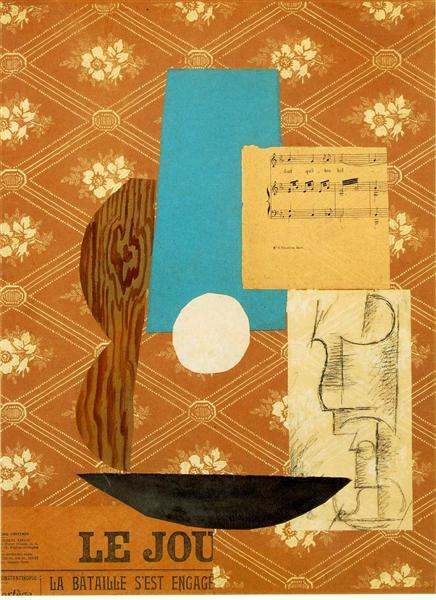
Artist: Picasso,
Title: Guitar, Sheet Music, Glass, November 1912, MOMA
-Cardboard collage exploring form.
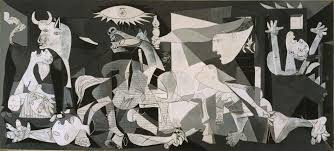
Artist: Picasso,
Title: Guernica,
1937, oil on canvas, Museo Nacional Centro de Arte Reina Sofia,
- history painting
- violent image
- bombed by fascists
- painting about politics
- destruction and agony= nature of war
- profile and full face showcased
- arms = reference to Goya= national pride - texture and feeling of the newspaper, AP is arrived sending stories out
- human condition of the world - hole in horse, screaming
- bull- destructive- eats humans (Menataurs)
- Pieta as not real, sadness is true = pure unmitigated DEATH= savage killing - bombing, aerial bombing by Nazi Germany at invitation of fascists
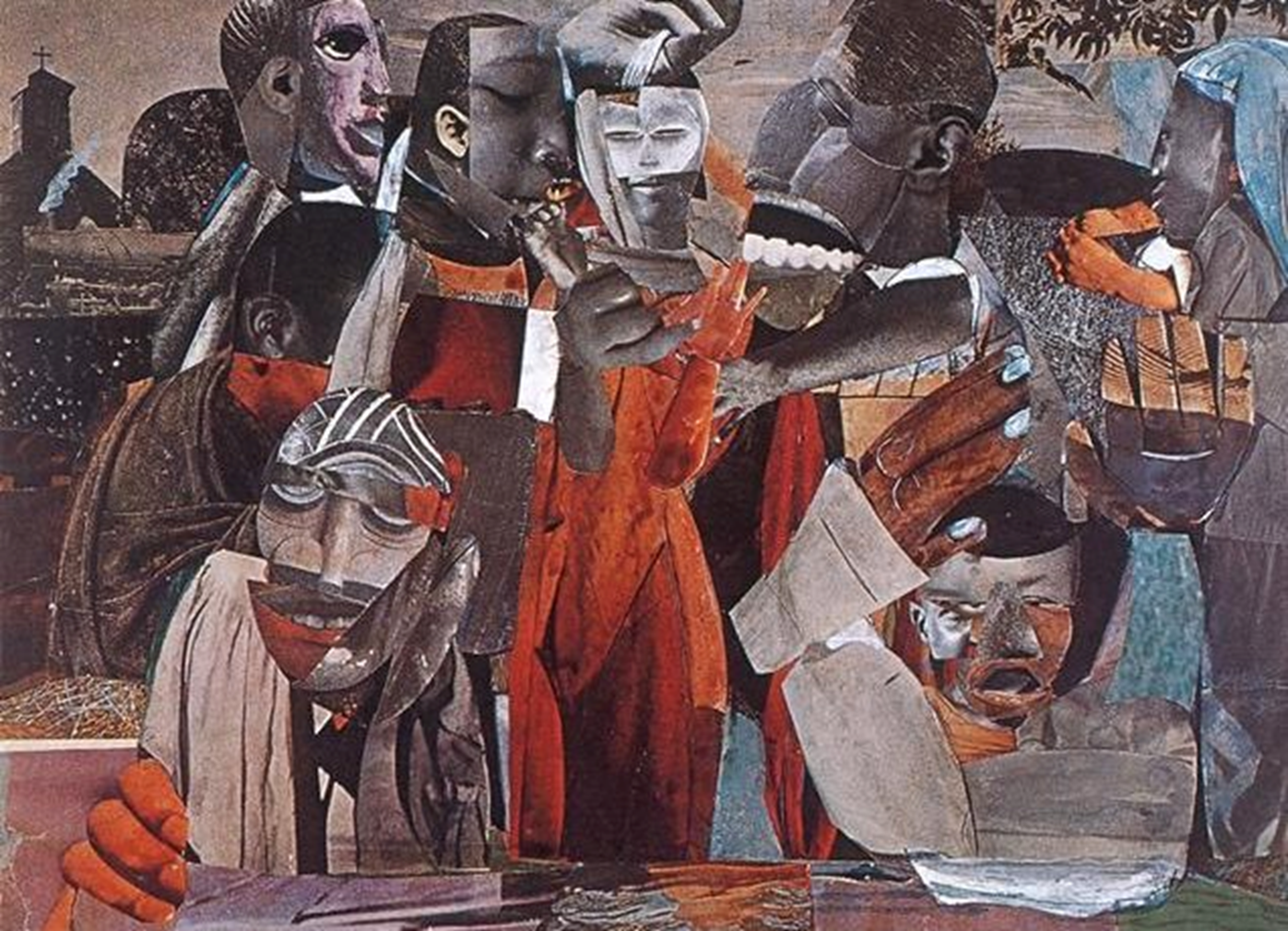
Artist: Romare Bearden,
Title: The Prevalence of Ritual, Baptism,1964
Particular - specific to his experience he’s had as a kid
Universal - baptism
Both Picasso and Bearden use the African masks in diff objectives in mind
Picasso - use African mask to scare/shock the French
Bearden - opp of what Picasso is trying to depict
-Use African masks collage in his work to explore identity as a Black man and how identity of many Africans brought to America as enslaved lost parts of their identity
Uses masks to create a collage a sense of togetherness
Romare Bearden, The Prevalence of Ritual, Baptism,1964
“When I was a boy in the South, in North Carolina, around spring, every Sunday morning they would have baptisms in the streams. So I tried to depict or imagine one of these events in collage. I used various parts of African masks for parts of the features of the people. I am very interested in myth and ritual. I used various kinds of African sculptures, because the people - when they were brought here from Africa - came from various tribes. So I tried a little bit of this, a certain fragmented depiction of an event that was happening in, let’s say, Mecklenburg County, North Carolina, and also extended - artistically and mythologically - to a certain past. That is the way I have often used the African sculpture - the baptism for example, to bring it back by working in some event, some remembrance I have of Charlotte and Mecklenburg County. In this particular instance it didn’t matter to me how the pieces were originally used; probably it should, but it didn’t. I might have, say, a Dan head for the nose or mouth, or use something else realistically. It was all mixed up to show Afro-American” (1987), in The Romare Bearden Reader: 165-66.]

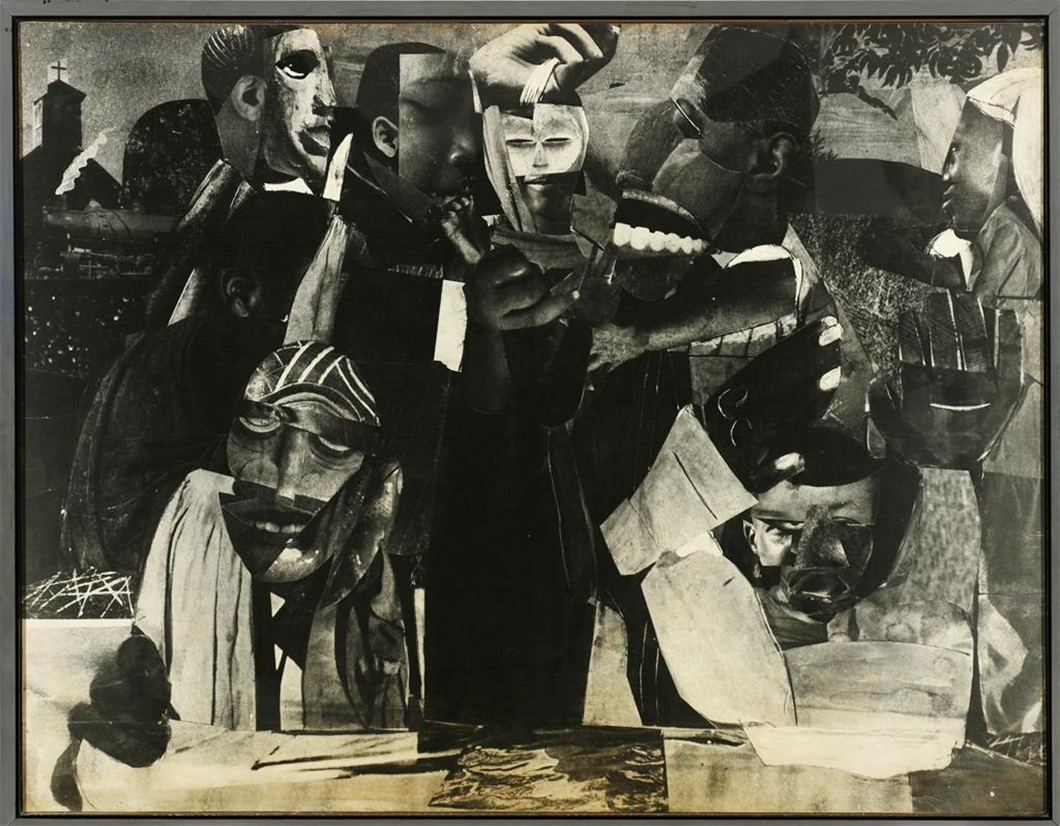
Artist: Romare Bearden,
Title: The Prevalence of Ritual,
1964, photostat
political and cultural climate of the United States during the early 1960s —
Related to the Civil Rights Movement and the evolving struggle over Black identity, representation, and visibility in American life
Collage, by its nature, is about cutting, assembling, and recontextualizing fragments — often from mass media.
This process mirrored the fragmented realities of Black life in America, shaped by systemic racism, dislocation, and resistance.
Bearden used images from mainstream (often white-dominated) media and reclaimed them, building a visual language rooted in Black experience.
His collages challenged how Black people were depicted in American culture — and created counter-images that centered Black humanity, ritual, and community.
The photostat enlargement process turned these intimate, hand-made works into monumental, public statements — asserting Black visibility in a society that often erased it.
Romare Bearden, The Prevalence of Ritual, 1964, photostat
Photostat is a collage made from a mass media clipping and then enlarged through projection
1963-64: How can we think about the development of collage at this time relative to American politics?

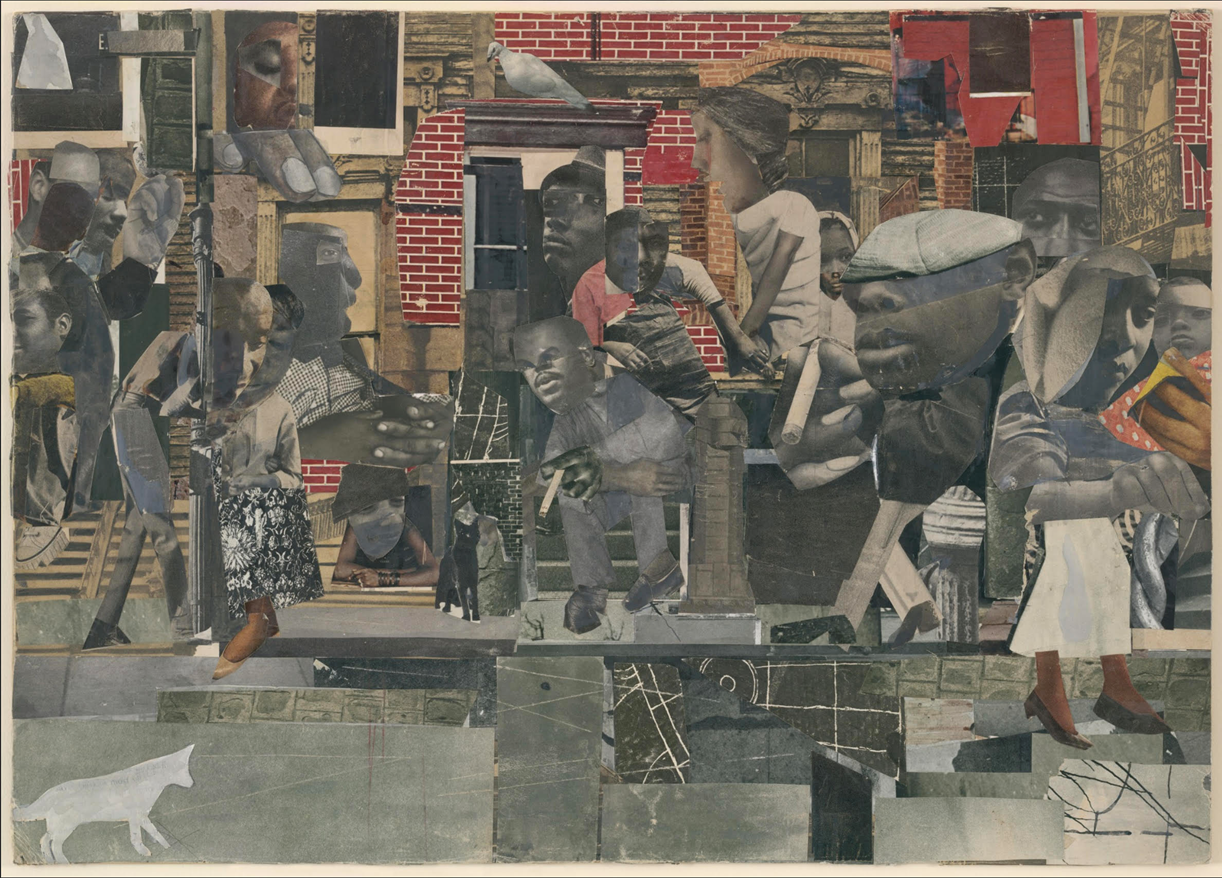
Artist: Romare Bearden,
Title: The Dove,
1964, cut and pasted printed paper, gouache, pencil and
colored pencil on board MOMA
-In the streets
-Collage, bring sense of togetherness, unity, Black identity and Black expeirience in America (very fragmented like pieces of collage but all come together to create sense of togetherness)
-The pavement of street at bottom brings all the fragments of people and coollage together —> unity
-The painting is called a dove
-All doves are pigeons but not all pigeons are doves
-Pigeons associated with gross, creepy, annoying, bottom feeders
-Dove associated with peace, holy spirit, religion
-By taking this common bird (a dove) -> brings peace, hope, together in his painting/collage
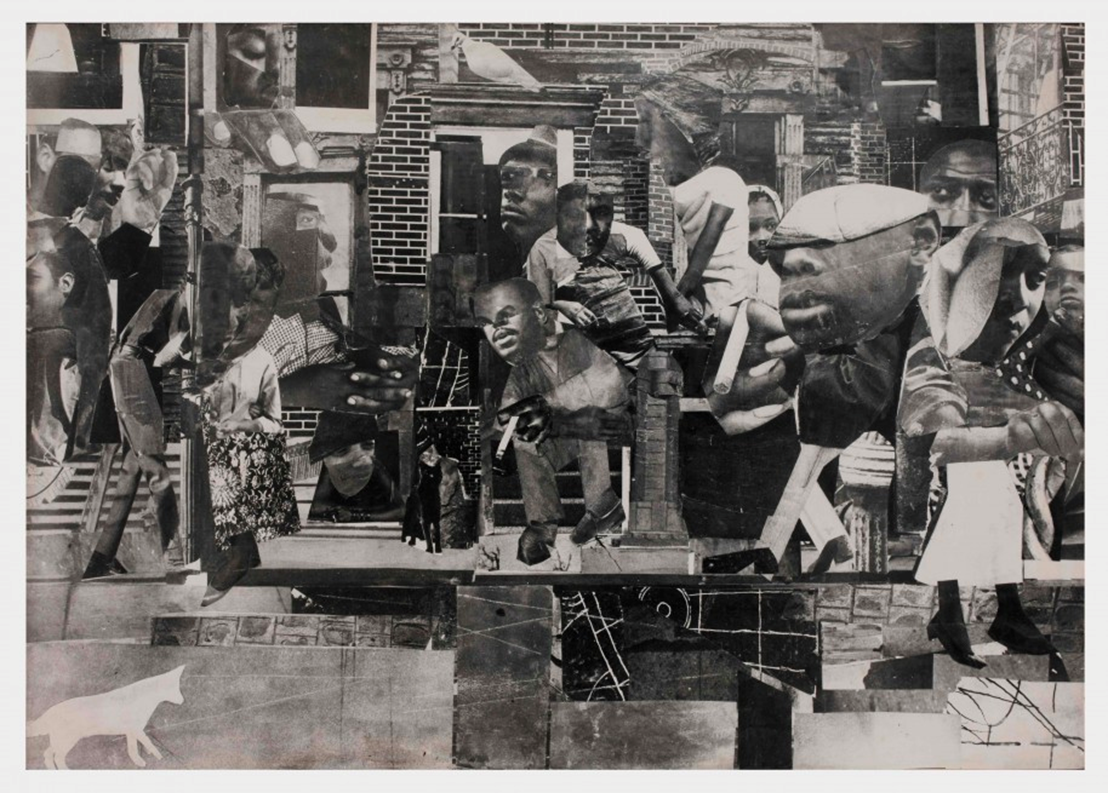
Arist: Romare Bearden,
Title: The Dove (Projection),
1964 Photostat on fibreboard
“I deliberately used some of the techniques of documentary film to give a ‘you are there’ feeling.”
What does he mean by that “you are there” feeling? How is the image a “documentary”?
-Black and white gives documentary, jouranlistic feel
-Looks like it is a part of history → reminds you of the History of Black Americans —> civil rights, slavery, etc. Black experience in America
-Romare Bearden uses collage not in a fragmentary way but in a way that brings together (jointed rather than disjointed) about race
-An artist who wanted to be an abstract painter but felt it would not be helpful to comment on American society at the time
-Uses collage (catalouge, books, magazines, etc. about African related art/people)
-He makes it black and white so that it makes it a one flat smooth surface
-Black and white also makes it look more journalistic (newspapers and TV were black and white at the time)
Projection is black and white
While
Real collage is in color
-Use African Mask, use a face of a real person, a picture from history book --> all different parts for the collage --> but then make it black and white --> thus it smooths the surface and makes the collage more journalistic looking (Black and white)
-The painting is called a dove
-All doves are pigeons but not all pigeons are doves
-Pigeons associated with gross, creepy, annoying, bottom feeders
-Dove associated with peace, holy spirit, religion
-By taking this common bird (a dove) -> brings peace, hope, together in his painting/collage
-At first, looks very chaotic, disjunctive
-But then after looking for a while, looks very cohesive and unified (and Black and White helps with the sense of togetherness)
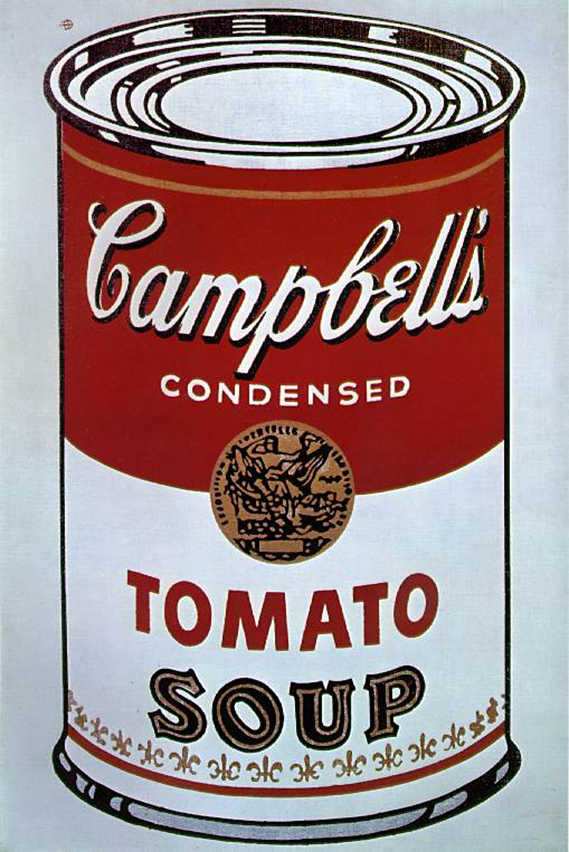
Artist: Andy Warhol,
Title: Large Campbell’s Tomato Soup Can,
1962, acrylic on canvas.
At this time, some people are questioning their mortality in the world in a time of war (Holocaust, etc.)
-And then this work art comes along (a Tomato soup can) --> seems insensitive
Although Warhol is not the most talented artist, he is doing something new and creative by using other people’s stuff
-His ideas (original) makes him talented
-Pop culture
-Consumerism/commonplace on left
-You don’t see brushstrokes (don’t see the hand of the artist)
made with a stencil
advertising- everything is current- what’s going on in the world
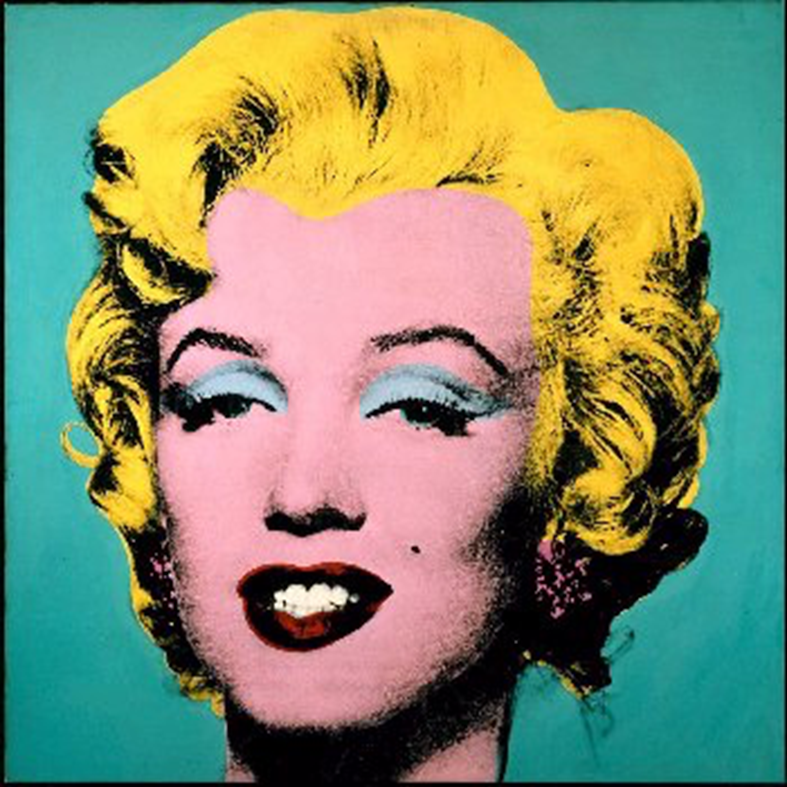
Artist: Warhol
Title: Shot Sage Blue Monroe,
1964, silkscreen.
Although Warhol is not the most talented artist, he is doing something new and creative by using other people’s stuff
-His ideas (original) makes him talented
-celebrity
- advertising of pop culture
- kind of the OG celebrity cult guy
- brings back the portrait - you buy into Marilyn Monroe
- completely structure by Hollywood
-just as commercial as Campbell’s soup
- constructed reality
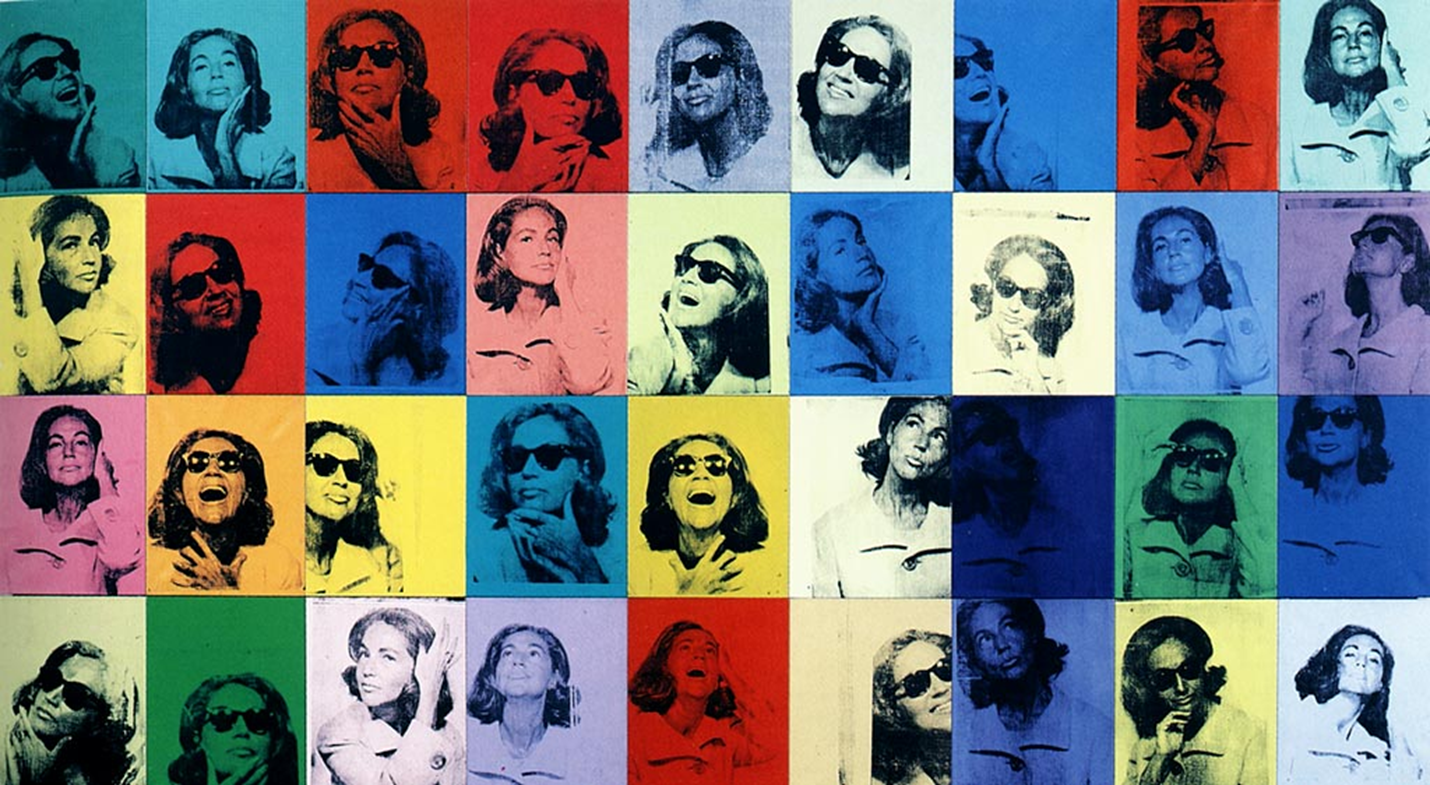
Artist: Warhol,
Title: Ethel Scull 36 Times, 19634.
-300 photobooth images
-Warhol chooses 36 of them
-Revives portraiture
-Warhol makes the painting much more dynamic (instead of photography replacing portraiture --> instead brings photography and painting to portraiture)
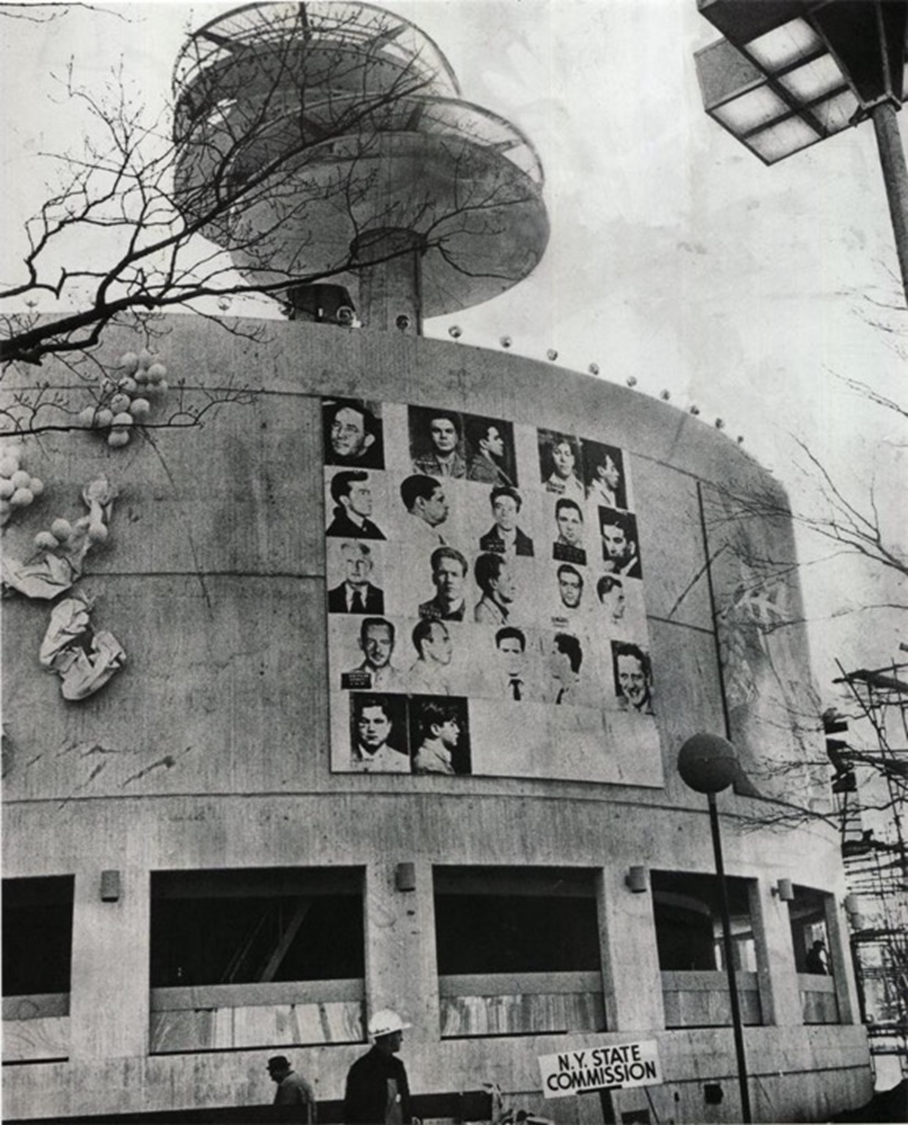
Artist: Warhol,
Title: Thirteen Most Wanted Men at New
York World’s Fair, 1964
Idolizing the criminals (gives the criminals some fame) --> also they are Italian criminals (and the curator of the workshop happens to be Italian!)
-Eventaully taken down
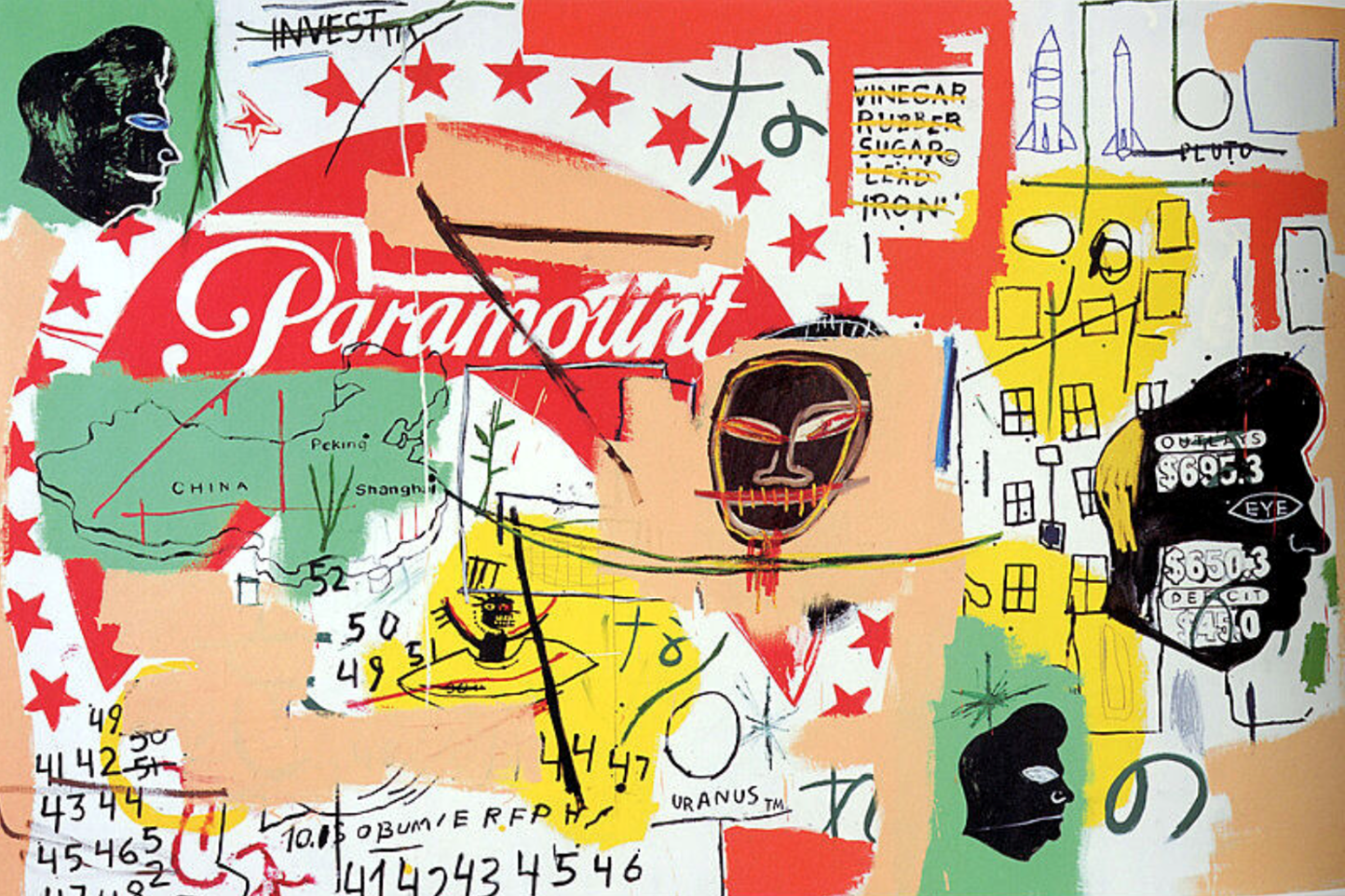
Artist: Jean-Michel Basquiat and Andy Warhol,
TItle: Paramount,
1984–85
-Warhol starts the painting with identifiable brands
-Basquiat approahces the art like graffiti
Not only is Warhol using these brand logos but he also takes advantage of Basquiat’s famous art in these Warhol x Basquiat collab paintings
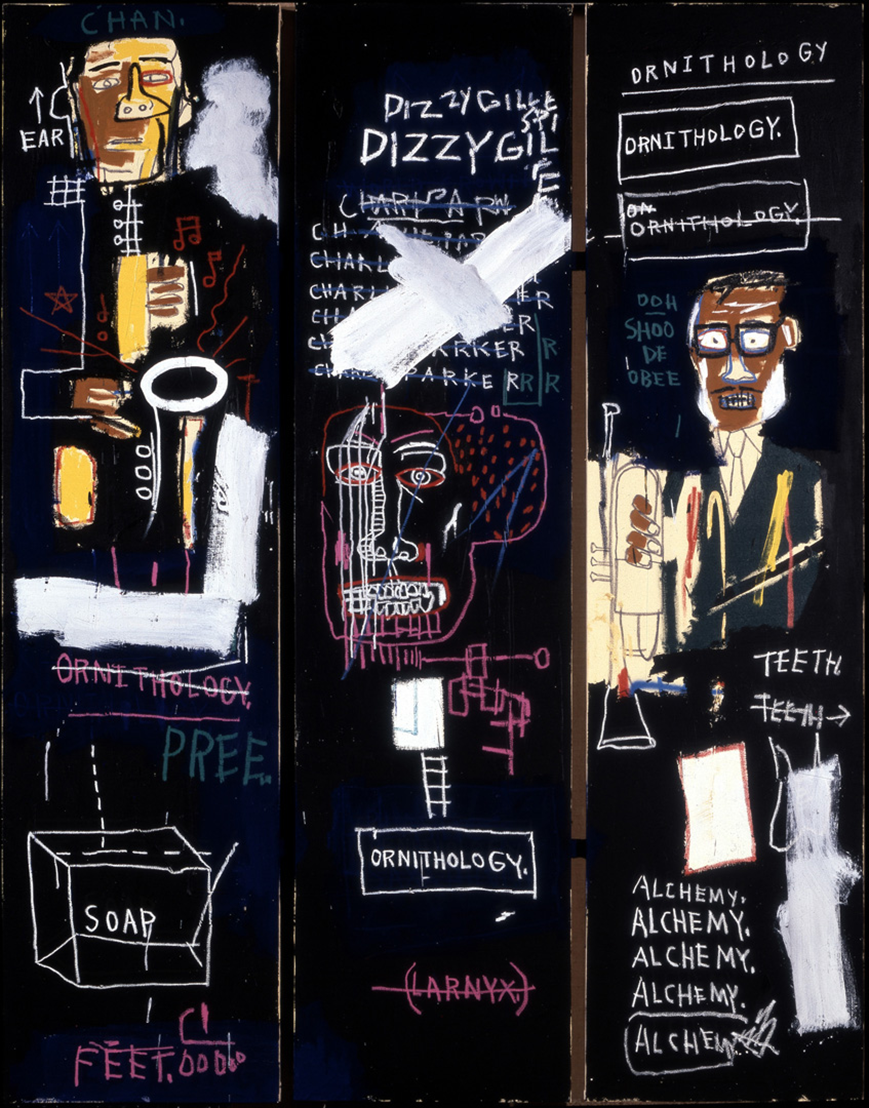
Artist: Jean-Michel Basquiat,
Title: Horn Players,
1983
-He makes use of famous jazz musician
-when you cross out word, you will be much more interested in that crossed out word (such as Charlie Parker)
It is kind of like a collage (different things brought together BUT all painted by hand)
Charlie Parker died (record company over worked him so he commits suicide)
-Basquiat sees Charlie Parker as someone very talented who is abused/taken advantage of/caught up in the system
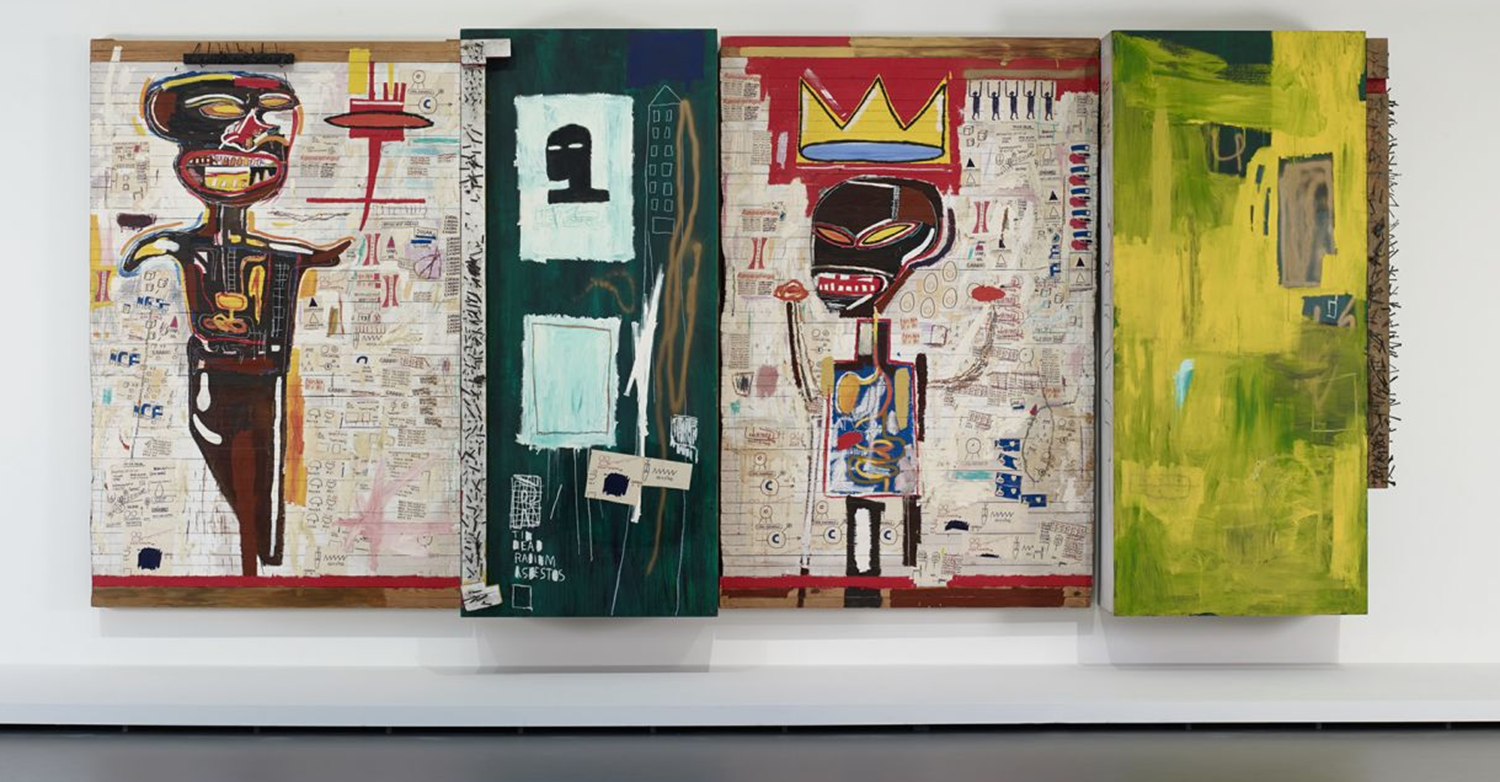
Artist: Jean-Michel Basquiat,
Title: Grillo,
1984
Basquiat References Haiti (enslaved people coming from Africa) with his figure he often draws in his paintings
-Griots are important figures in West Africa that keep the society running (in West Africa) --> and Basquiat references the Griot because of his Haiti heritage (connected to enslavement of West African people)
”Grillo” – phonetic French, coded creole phonetic spelling of “griot” the story teller and oral historian in West African tradition – one who keeps the narratives of the past, and tells them in order ot map a vision for the future.
